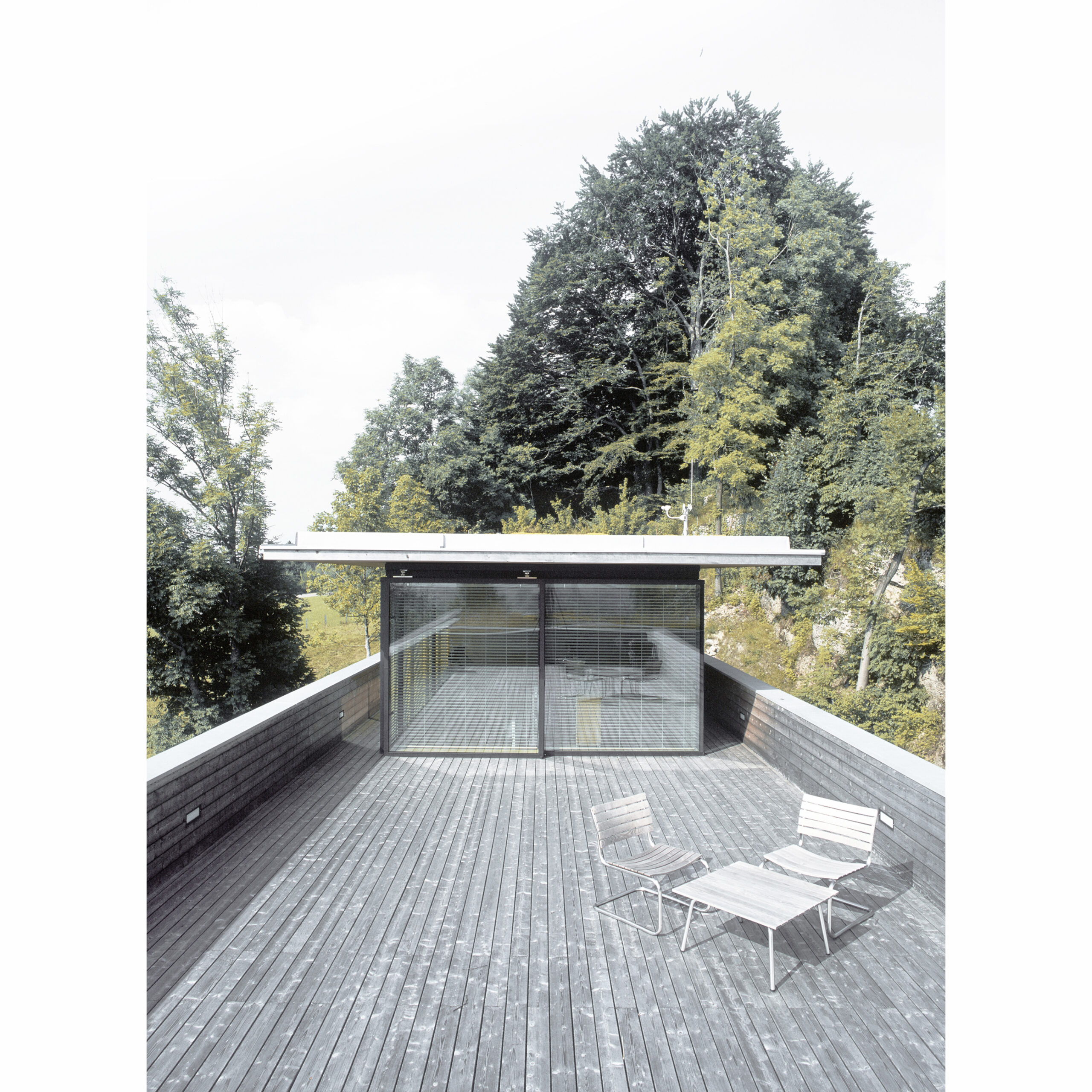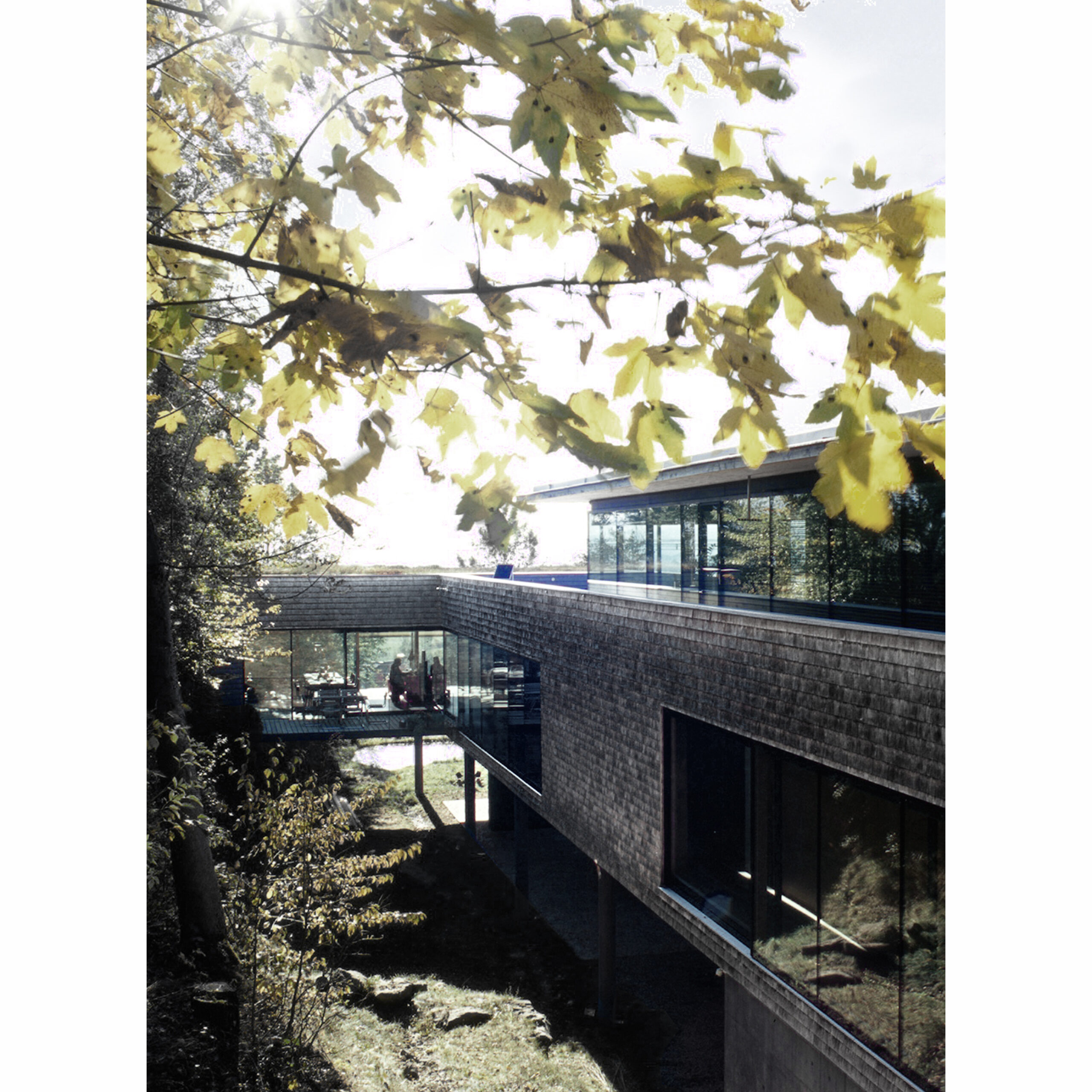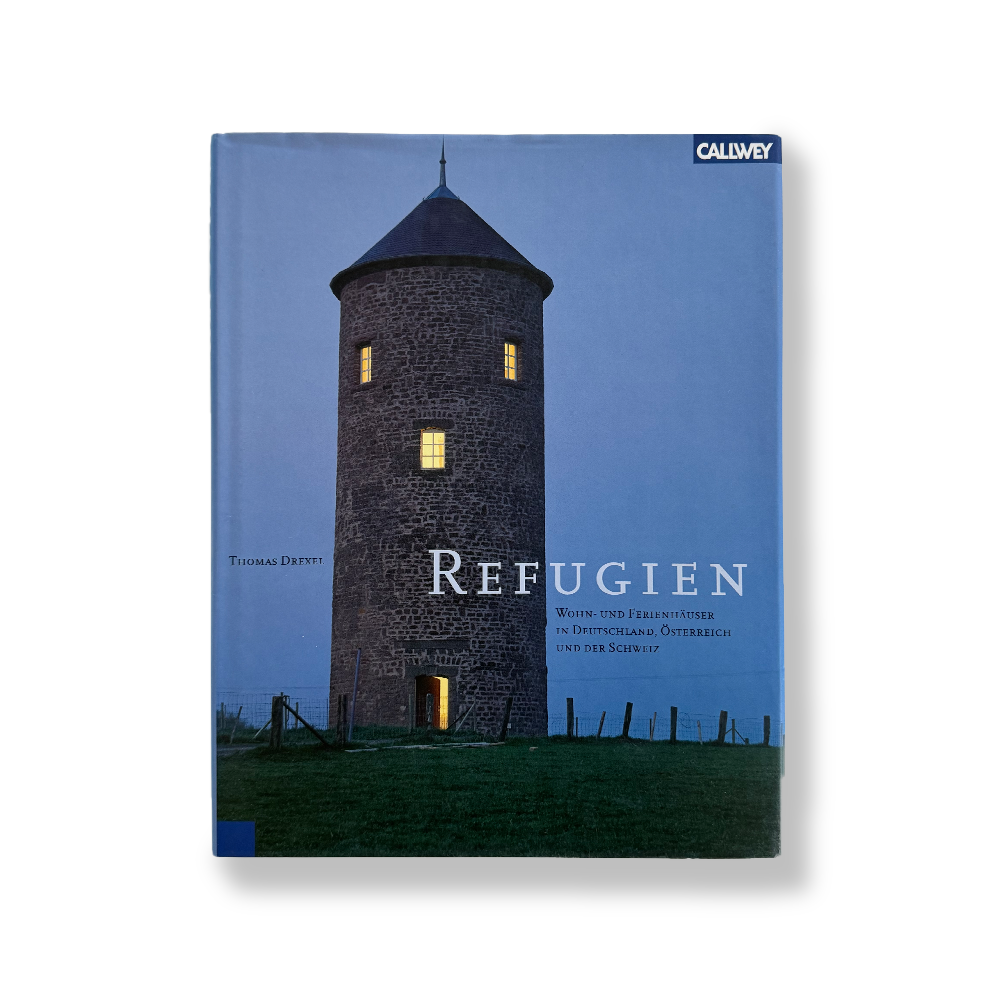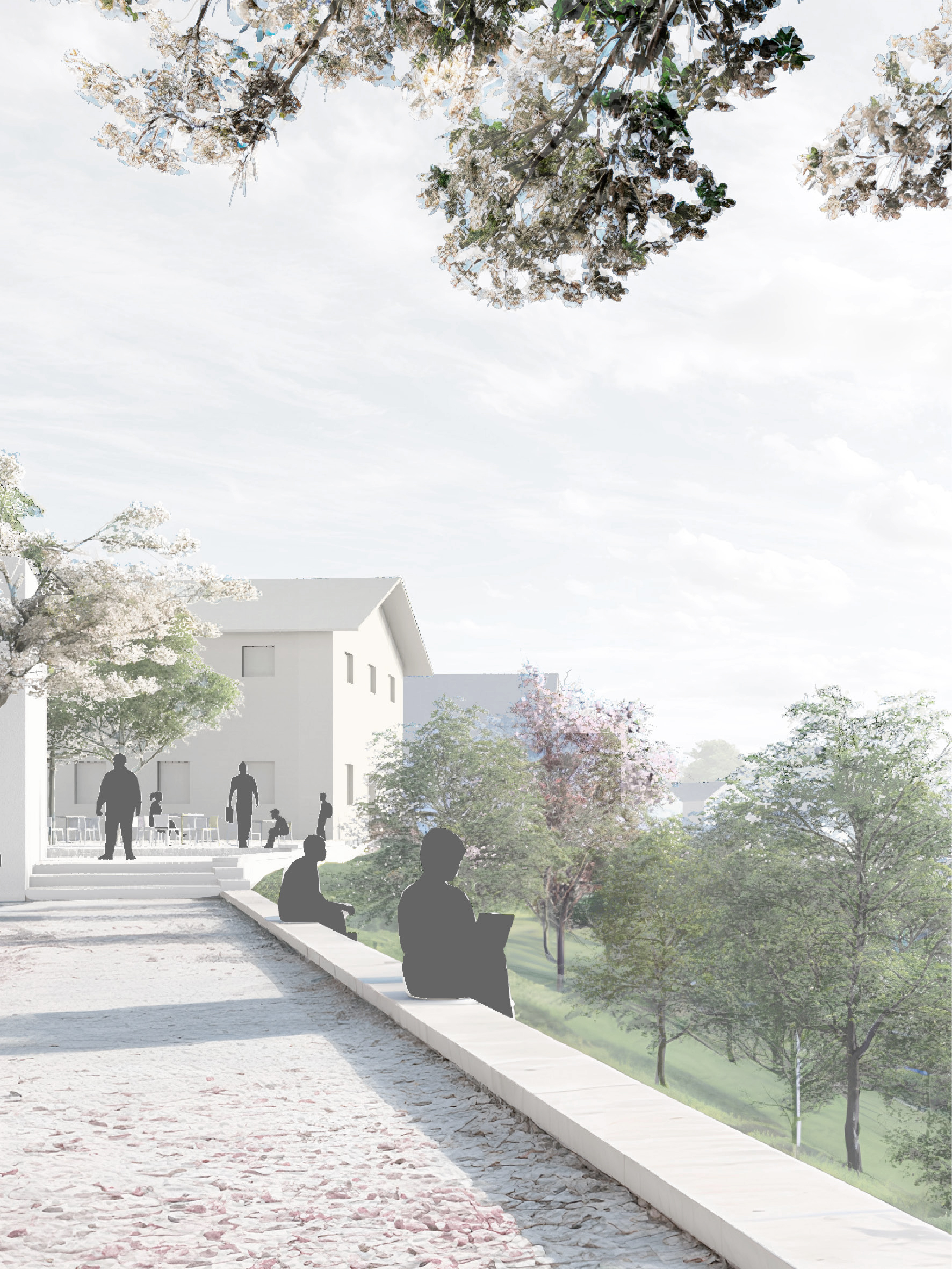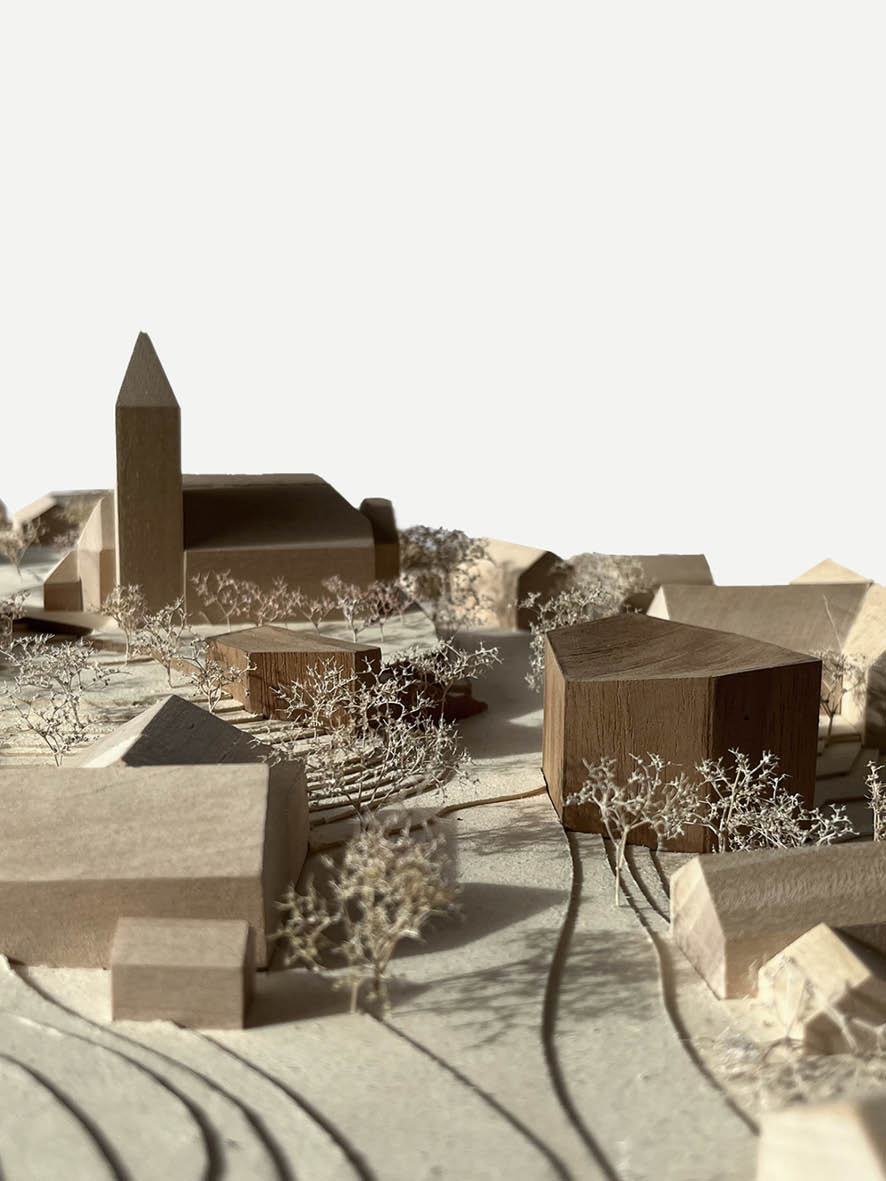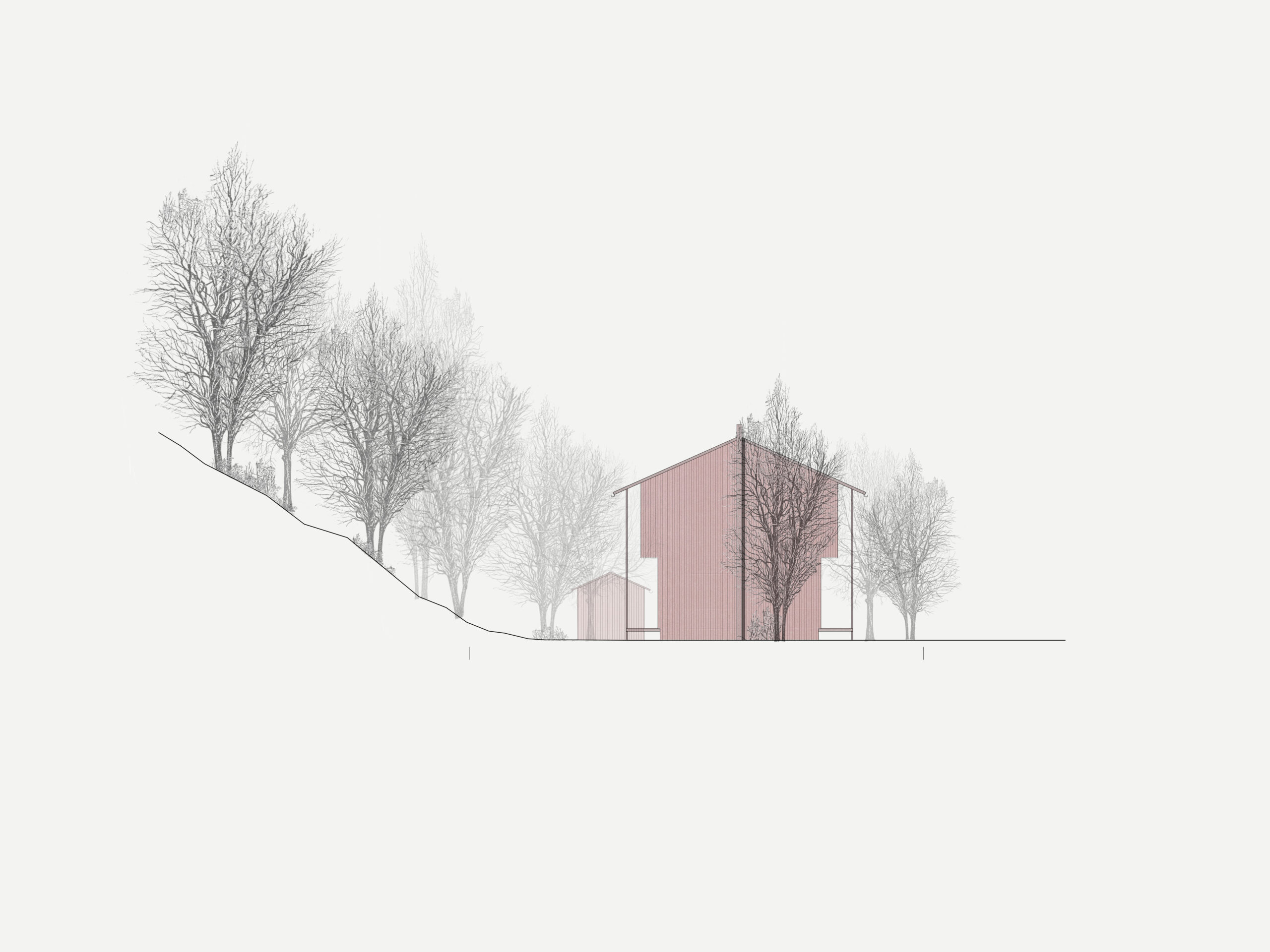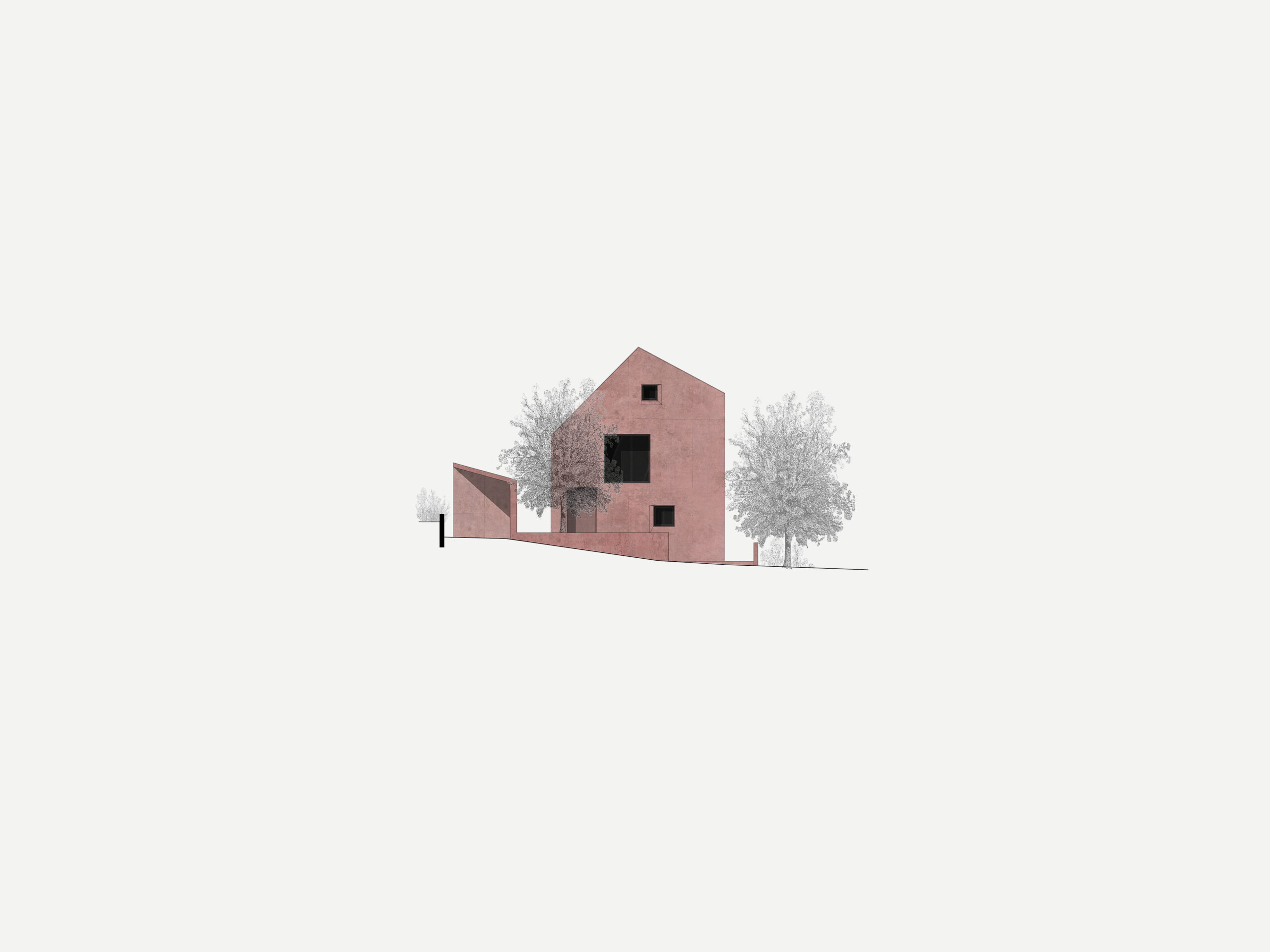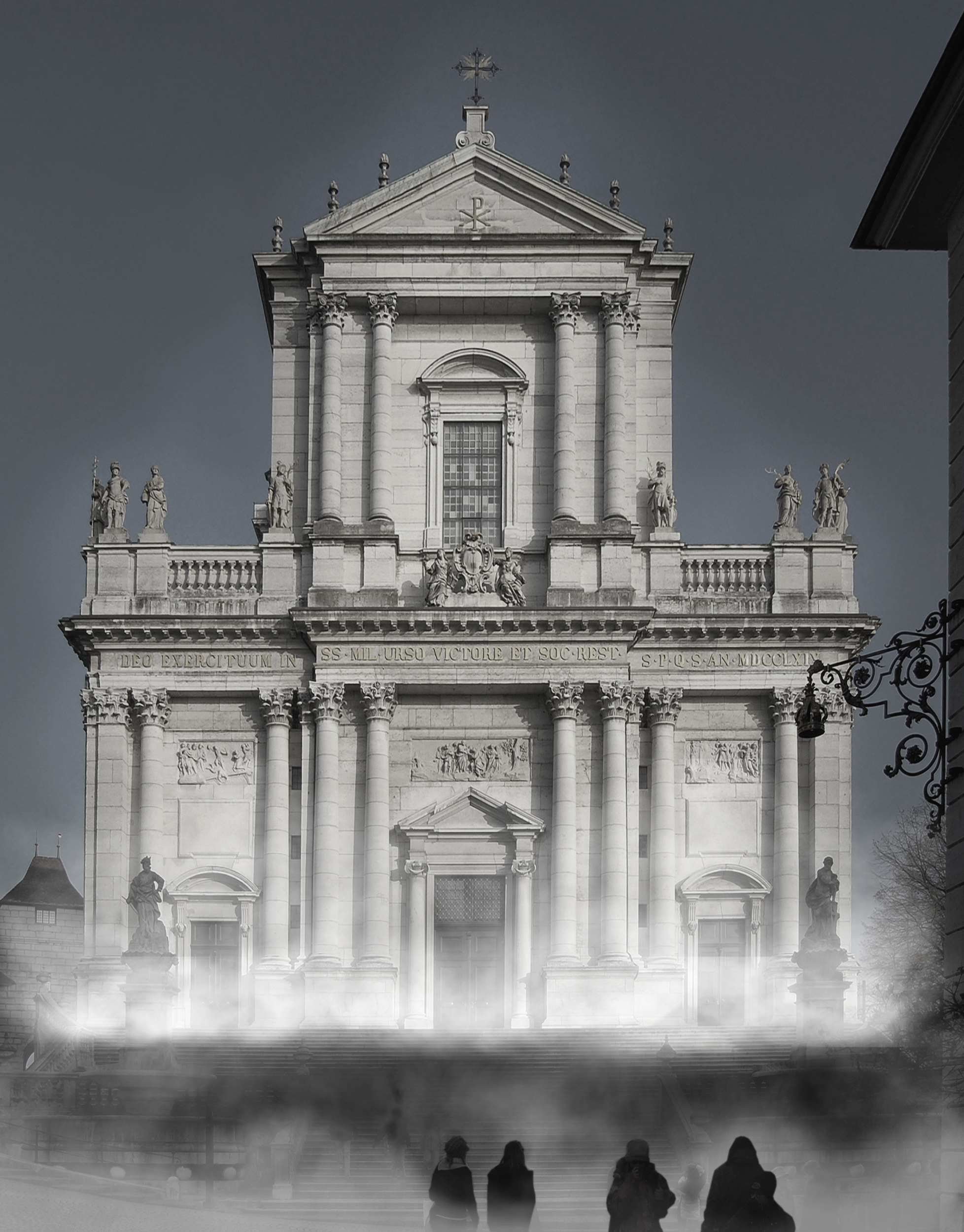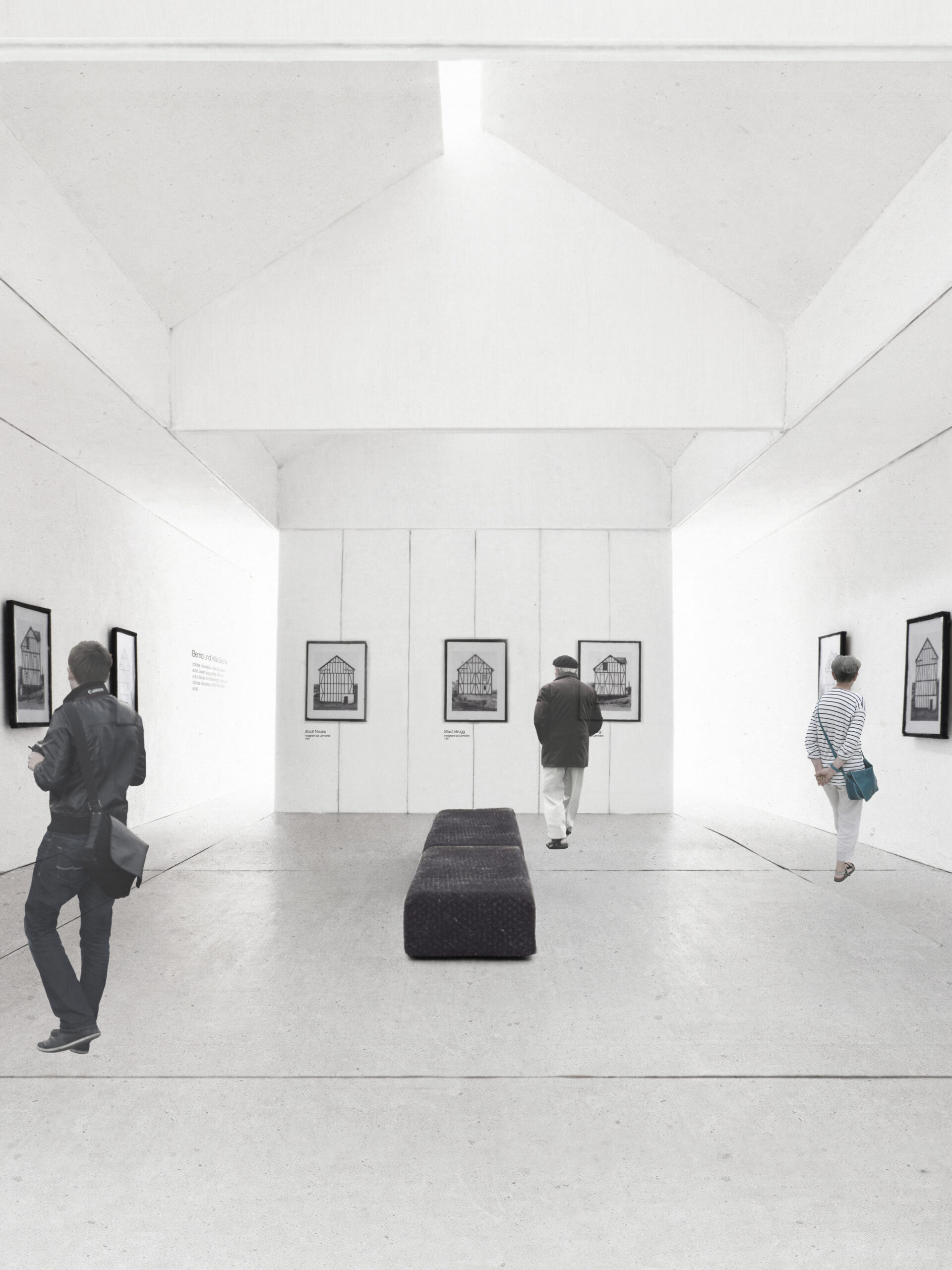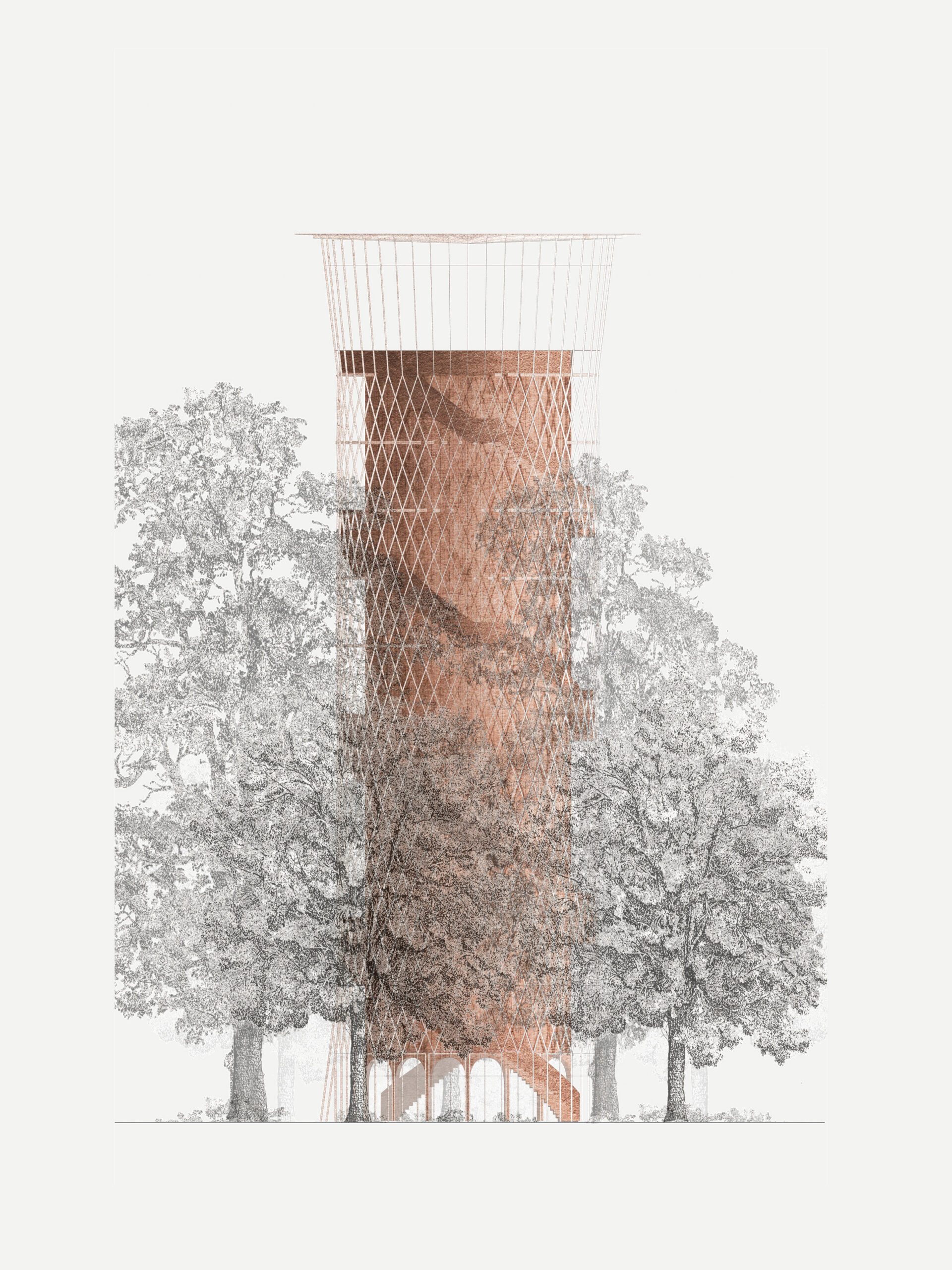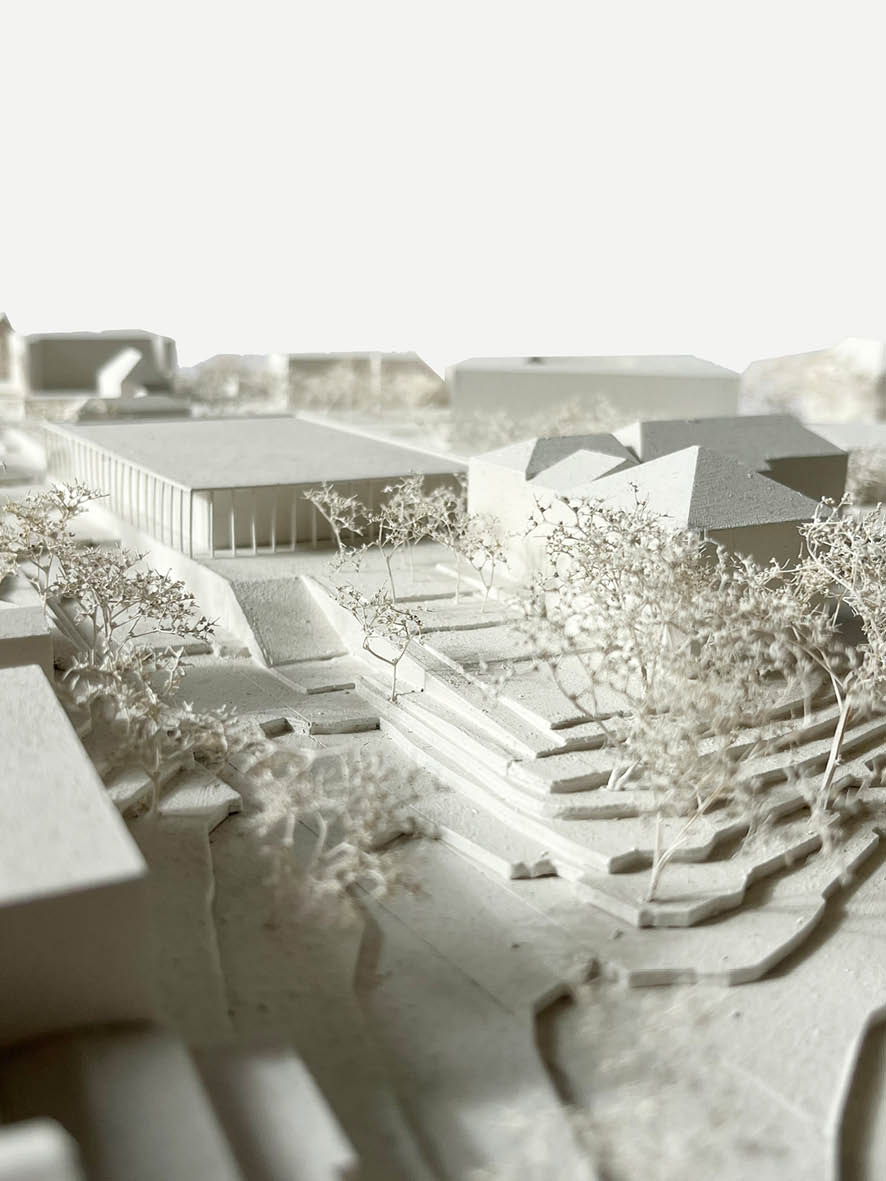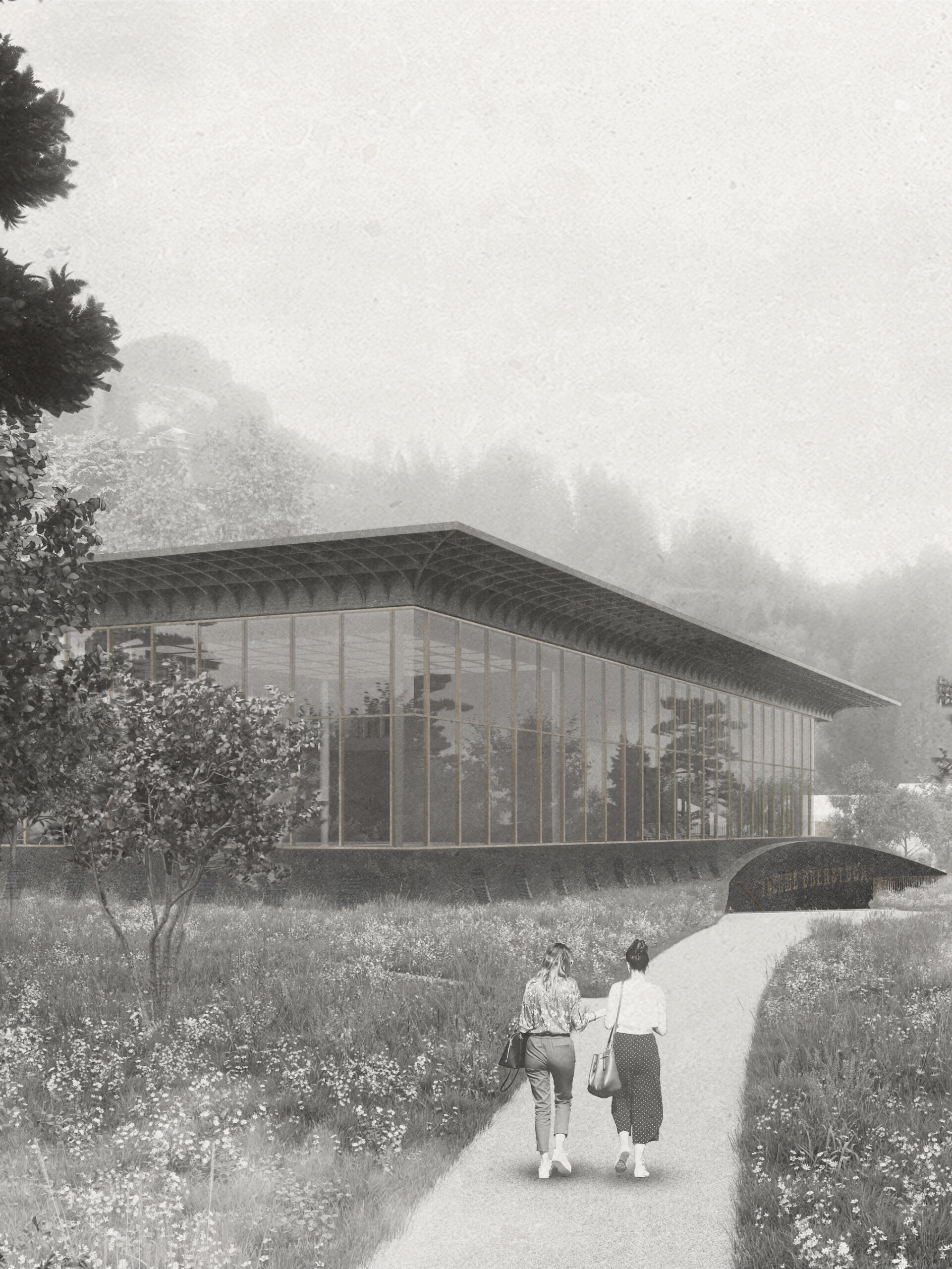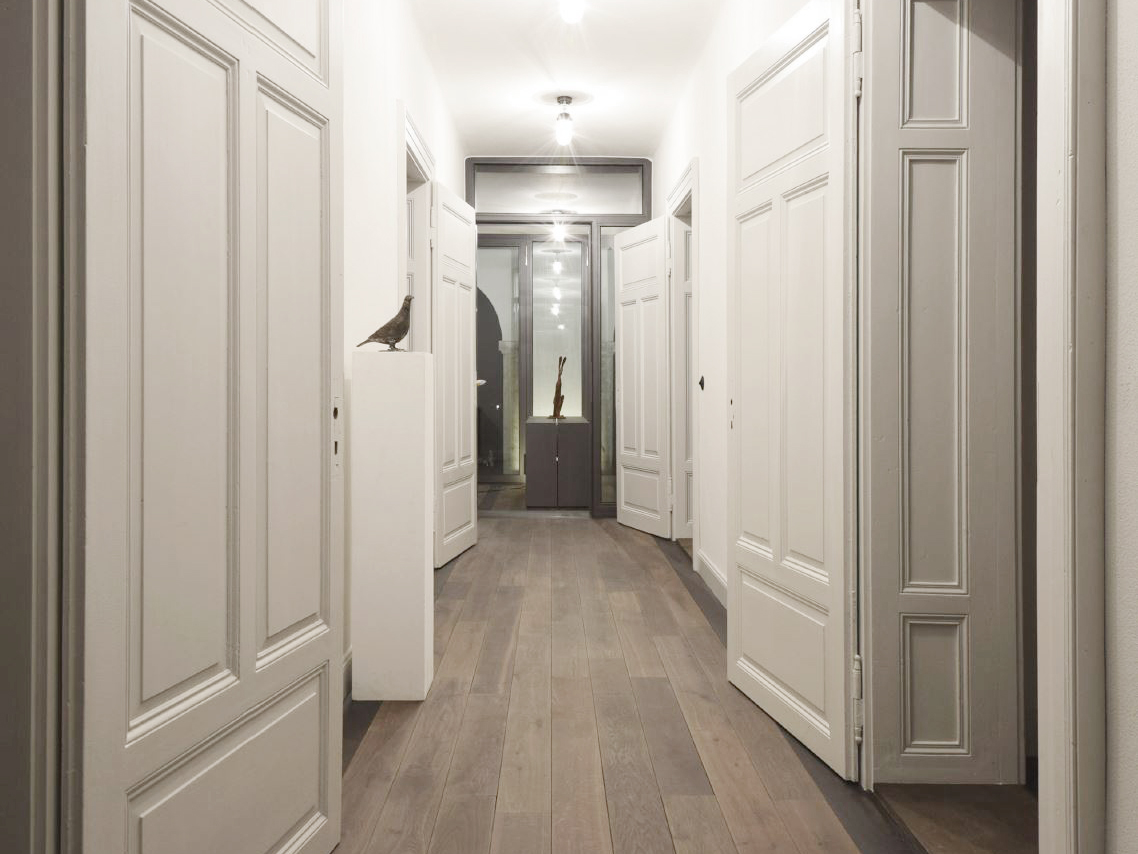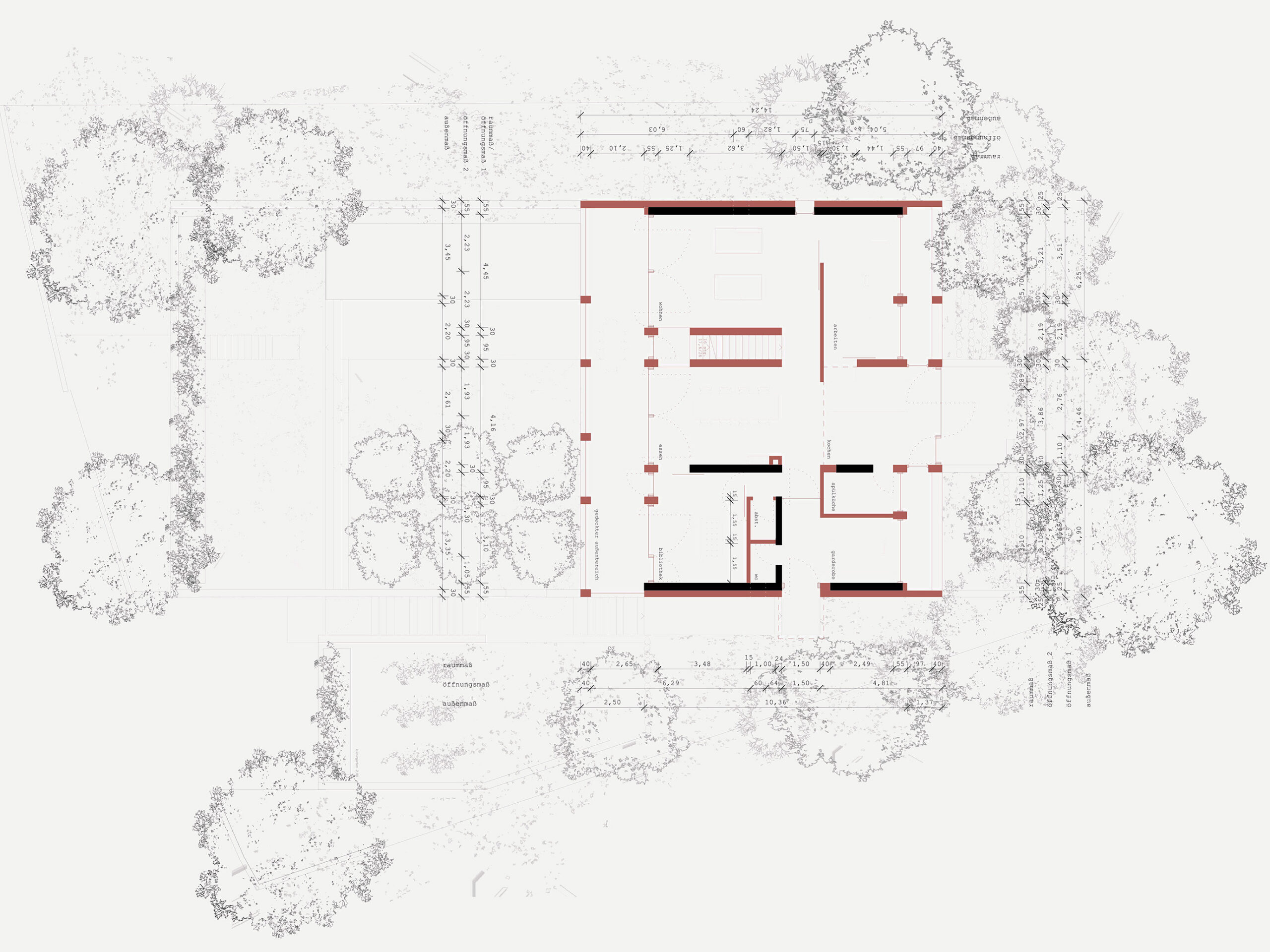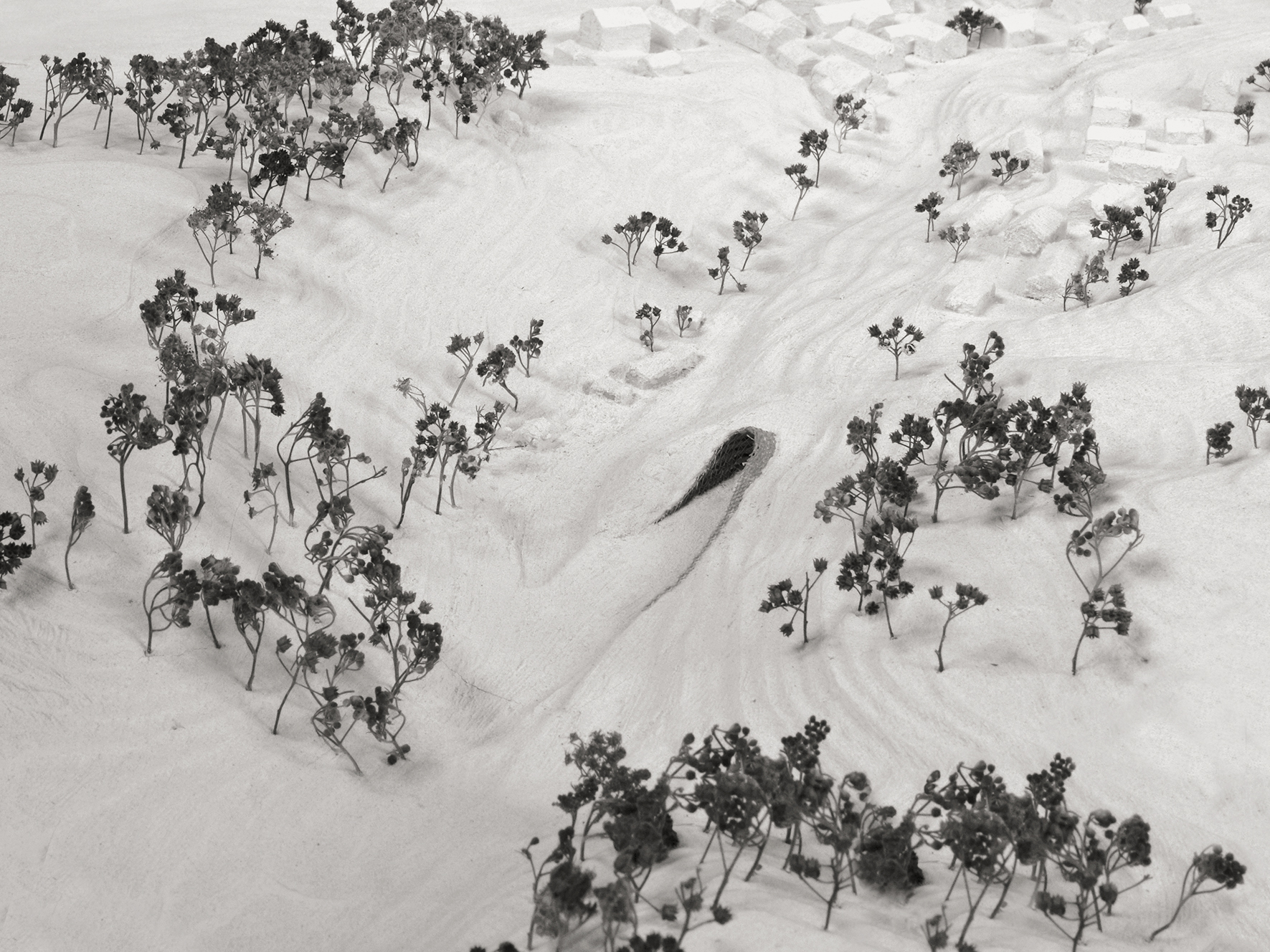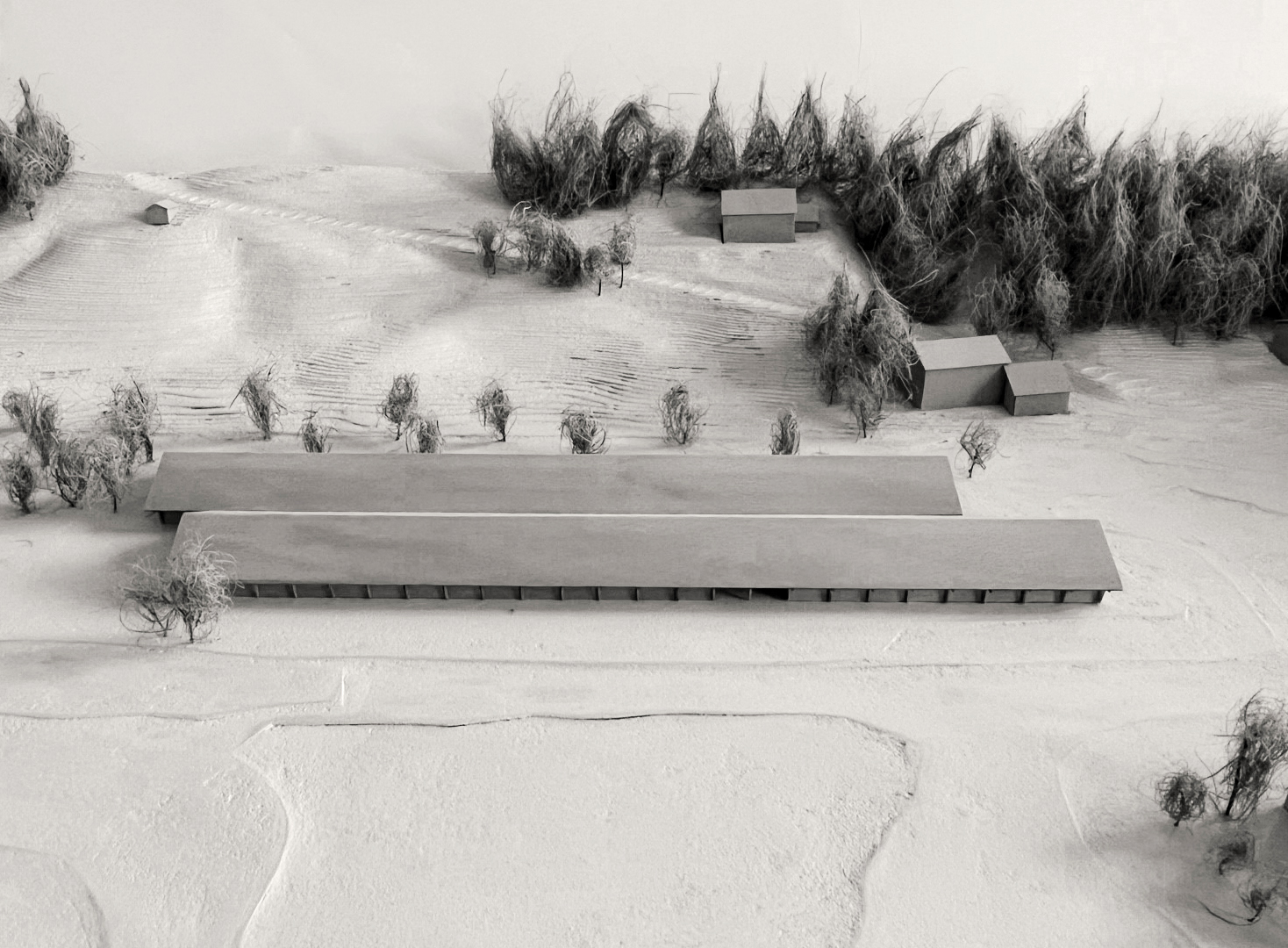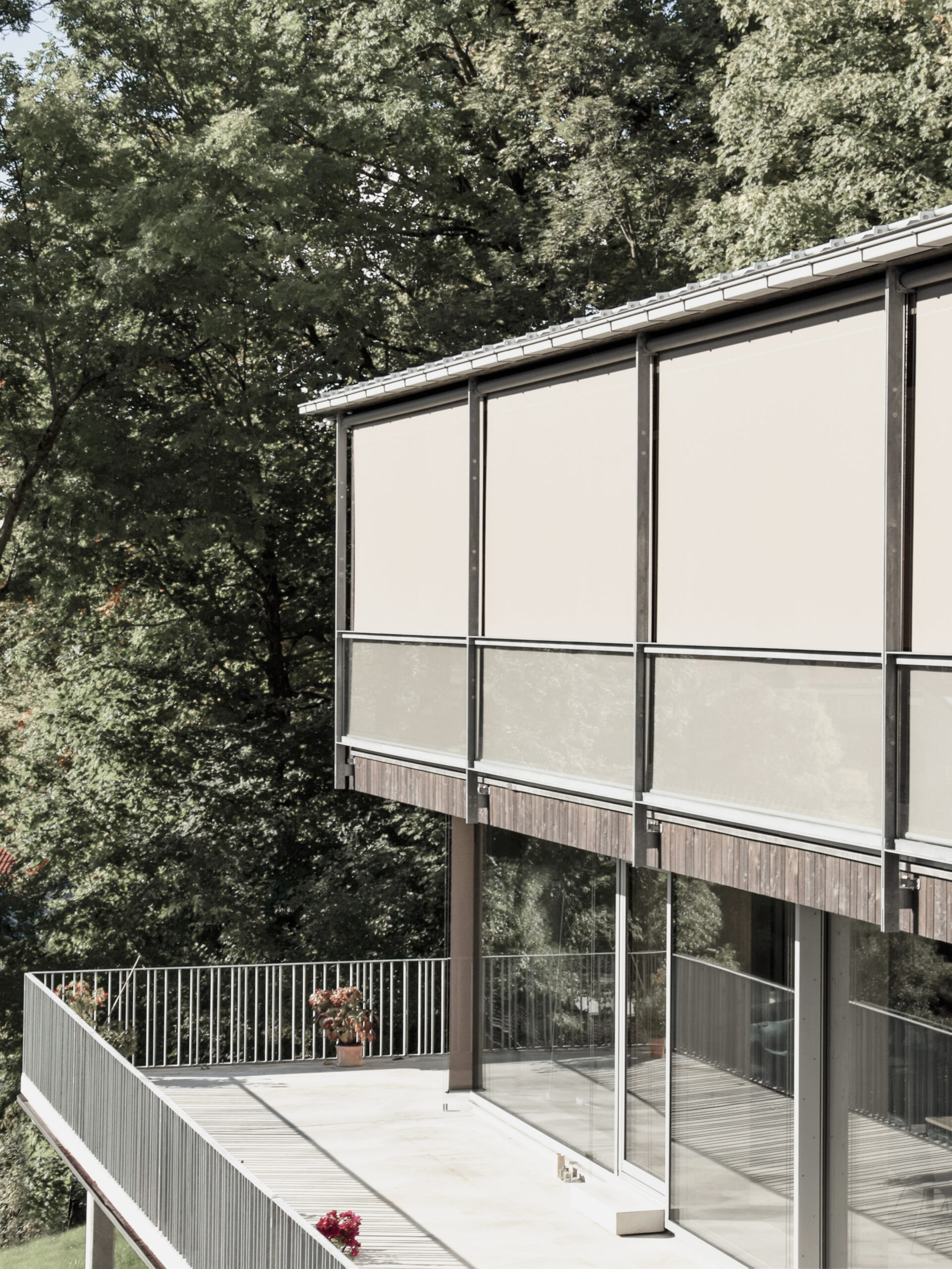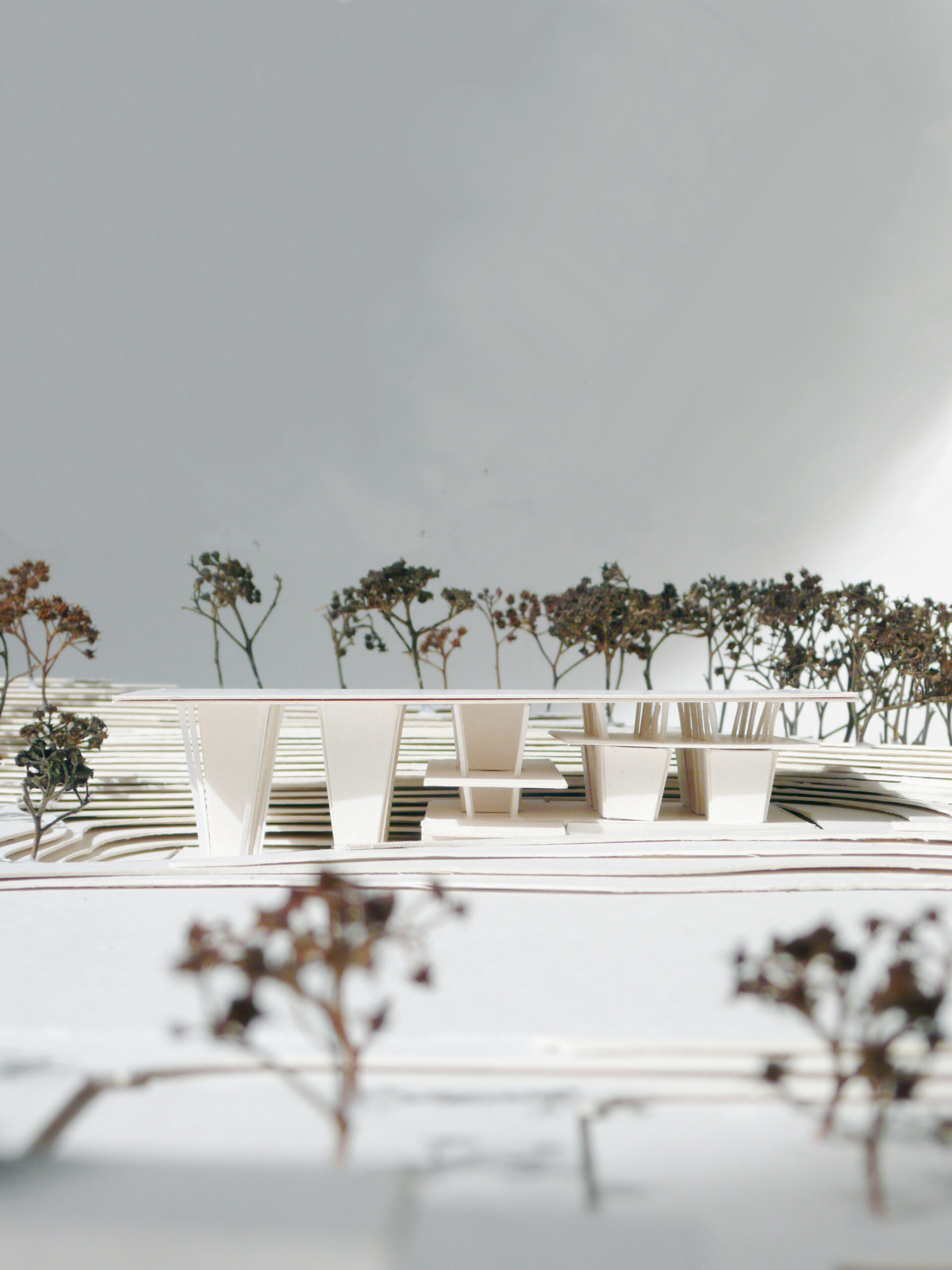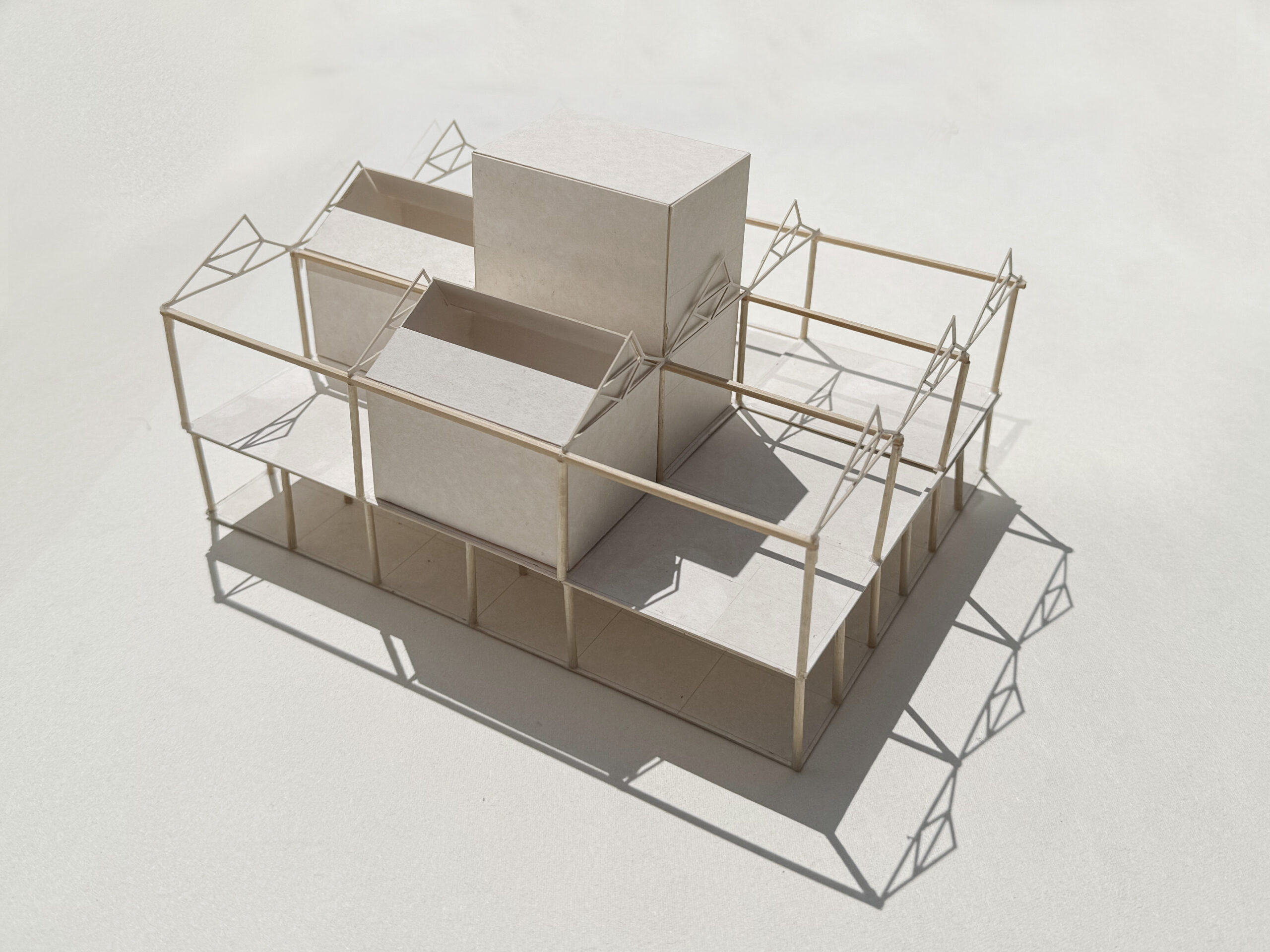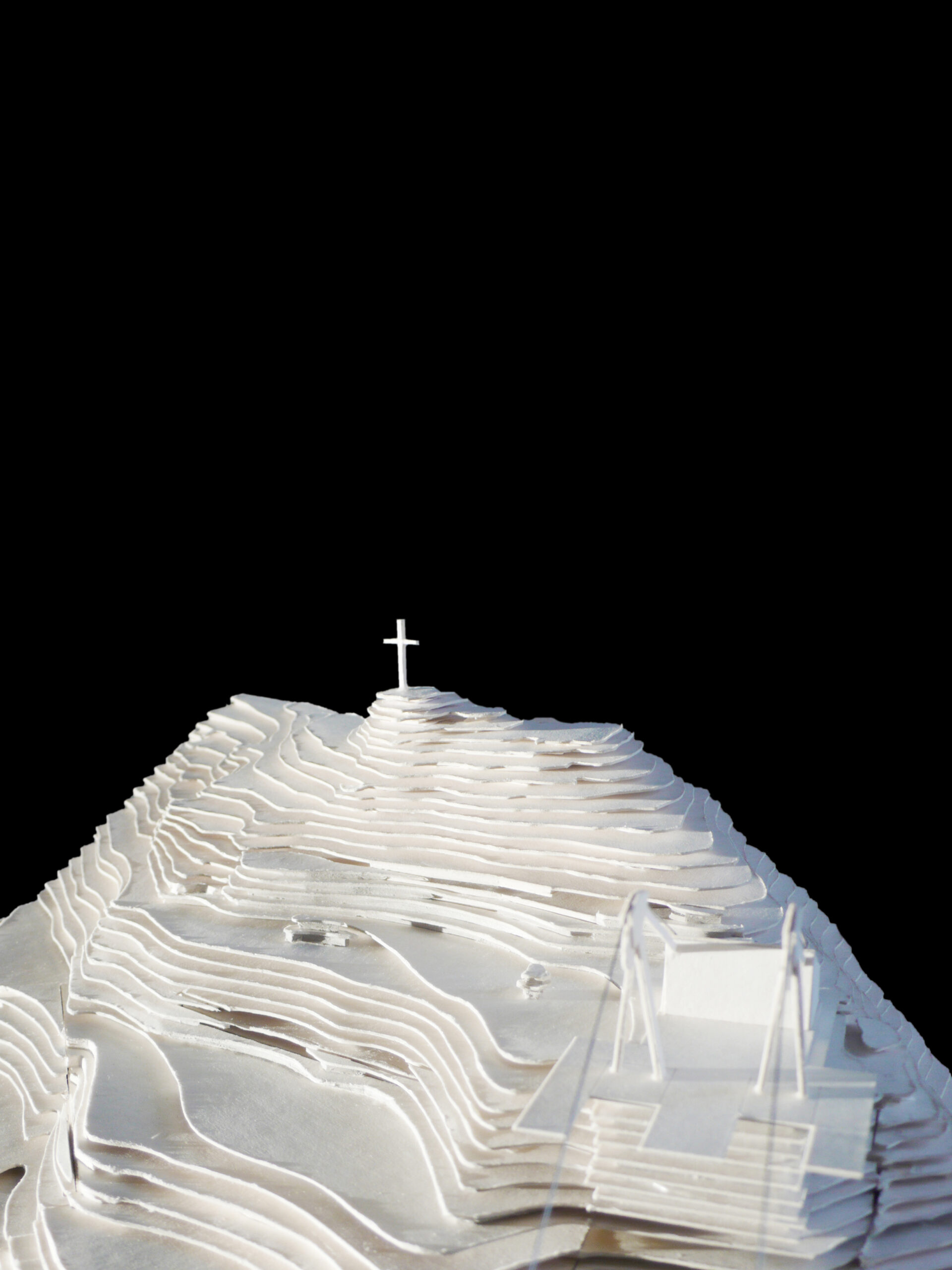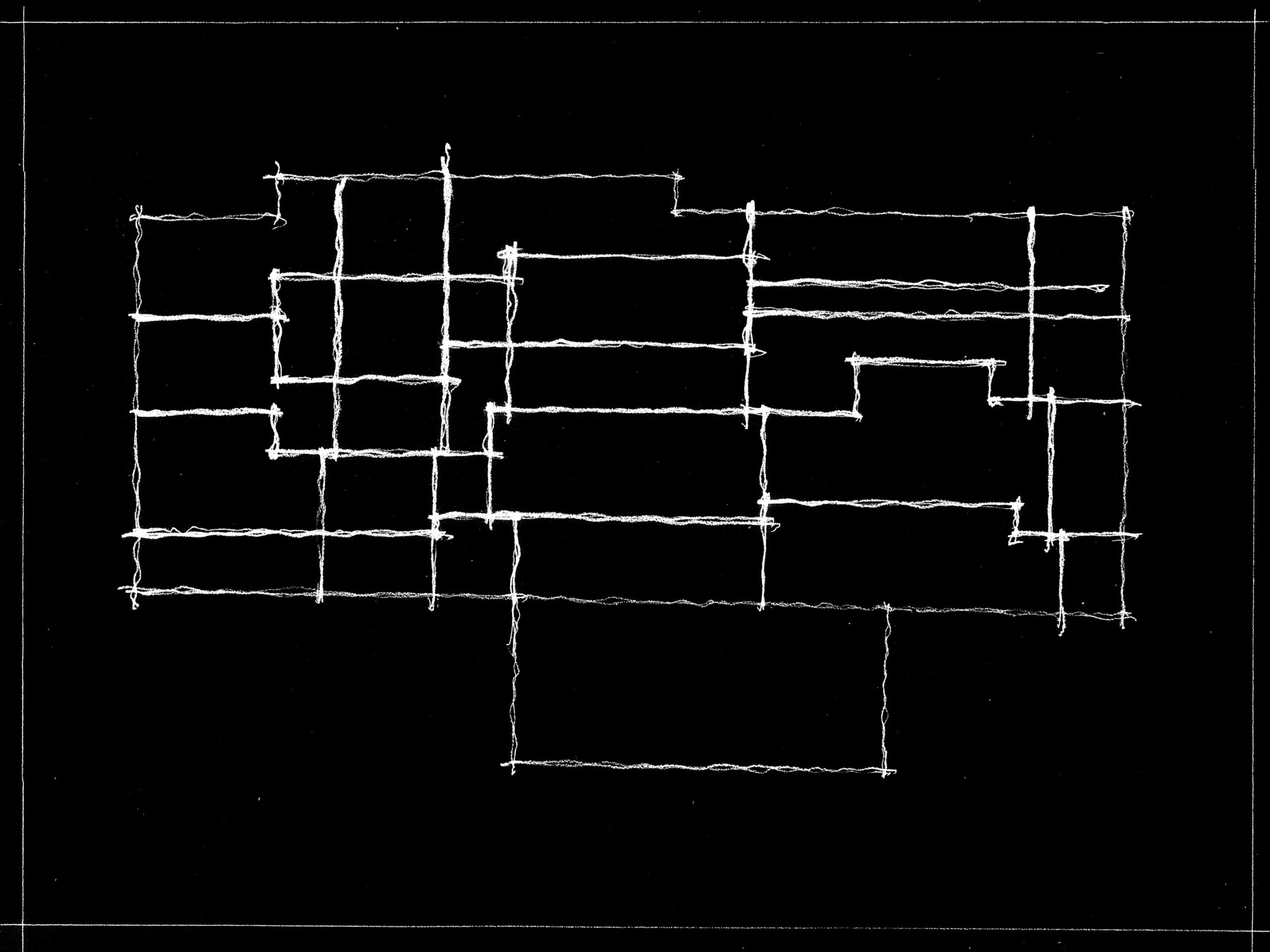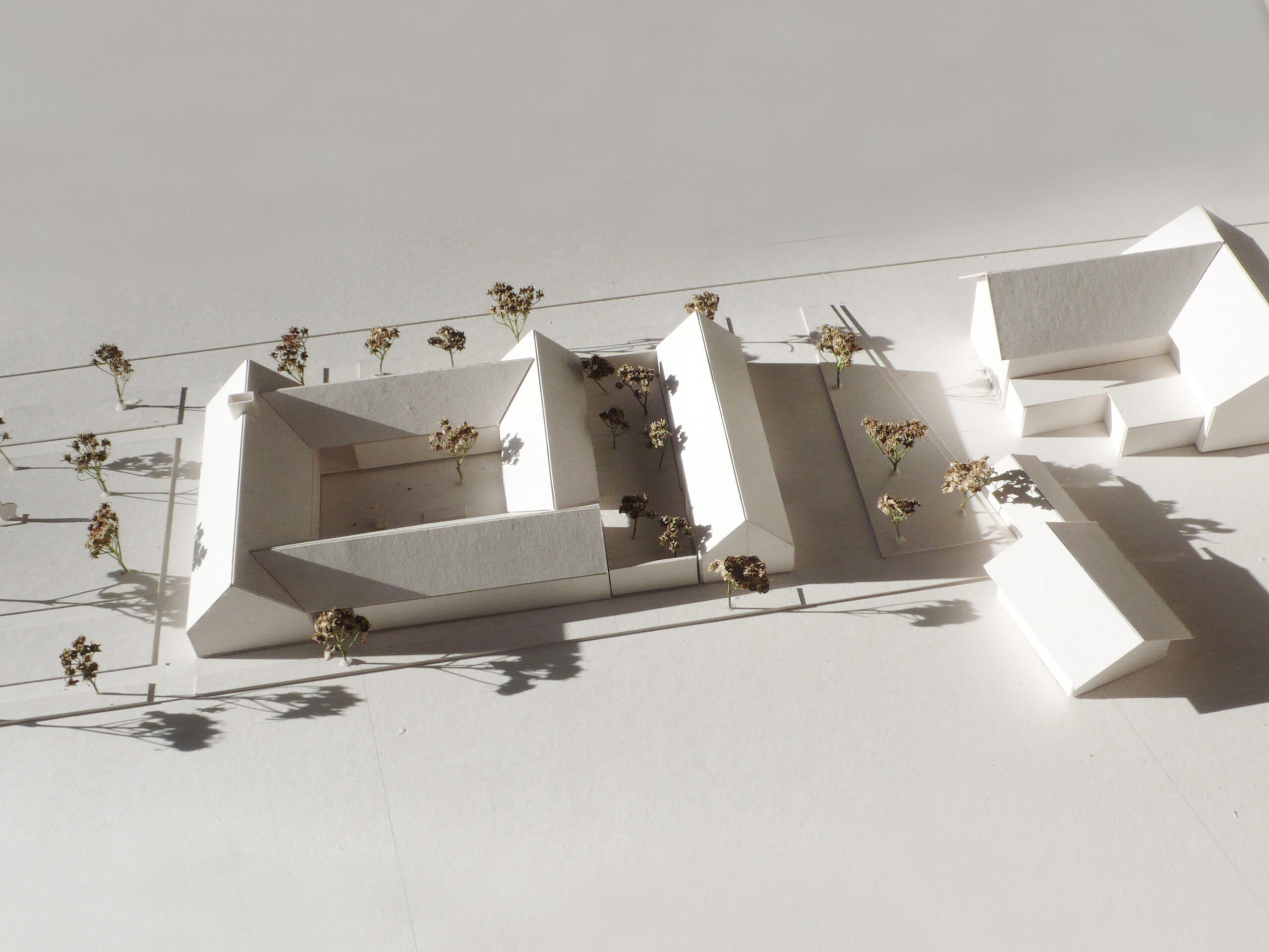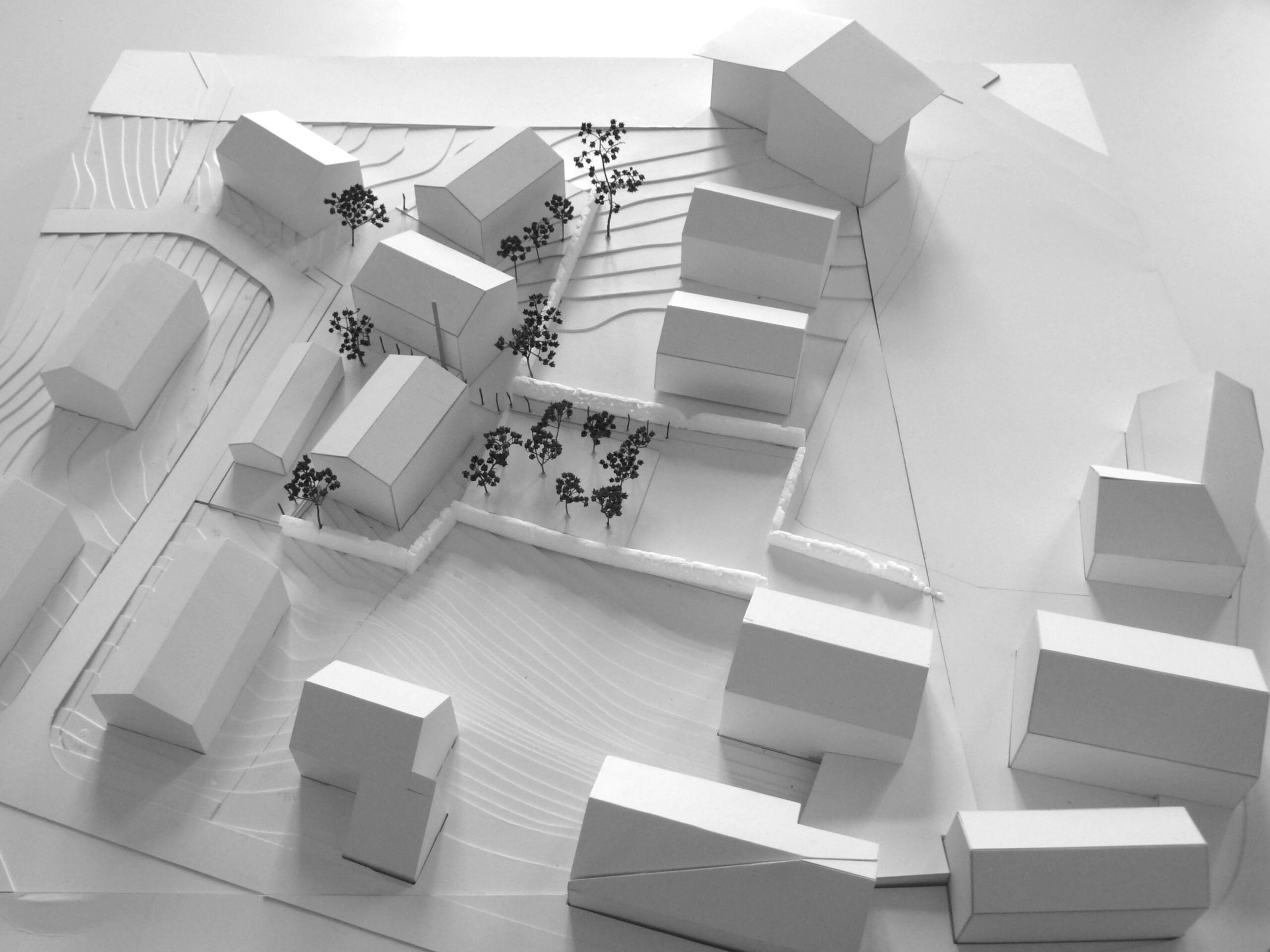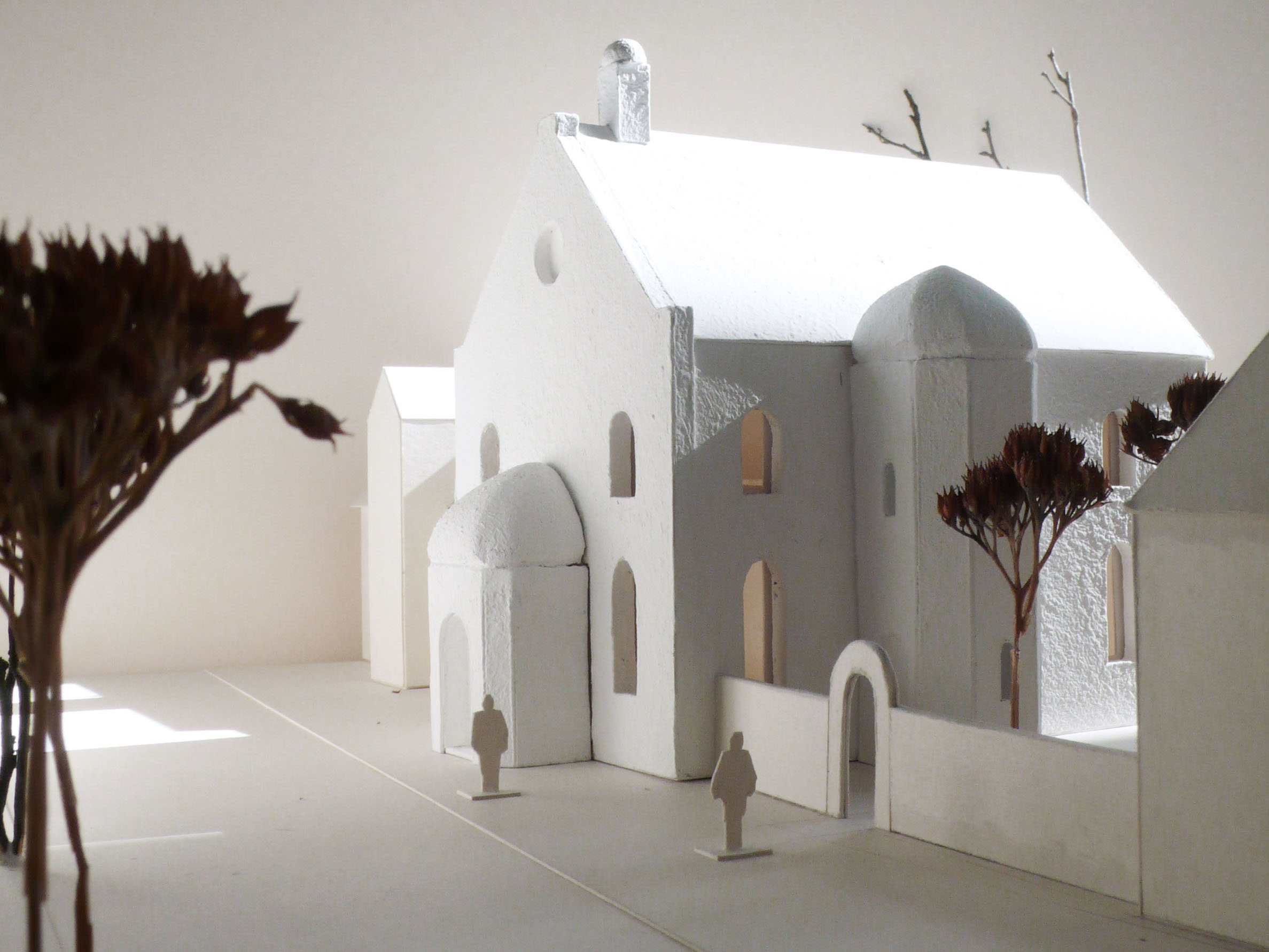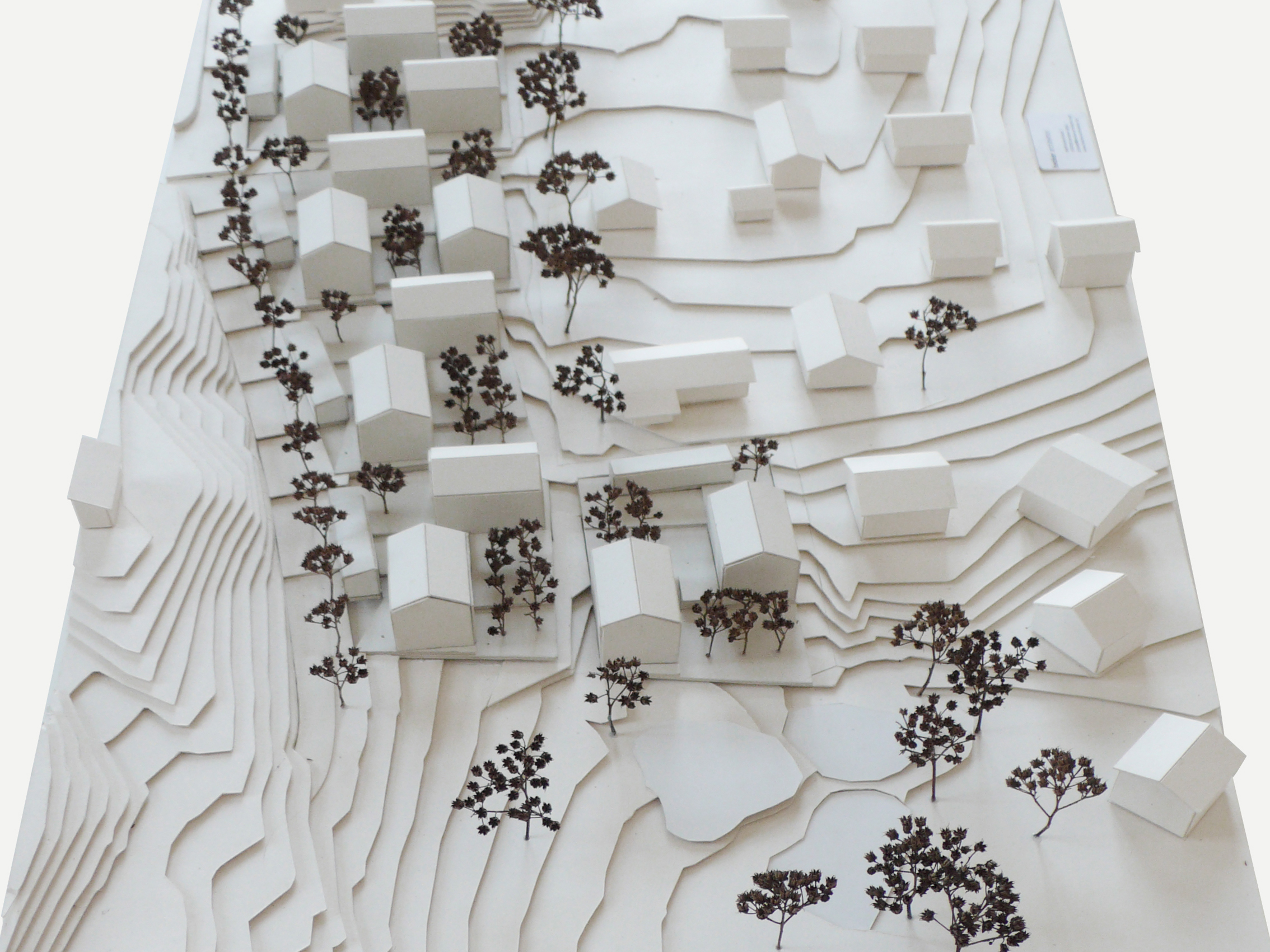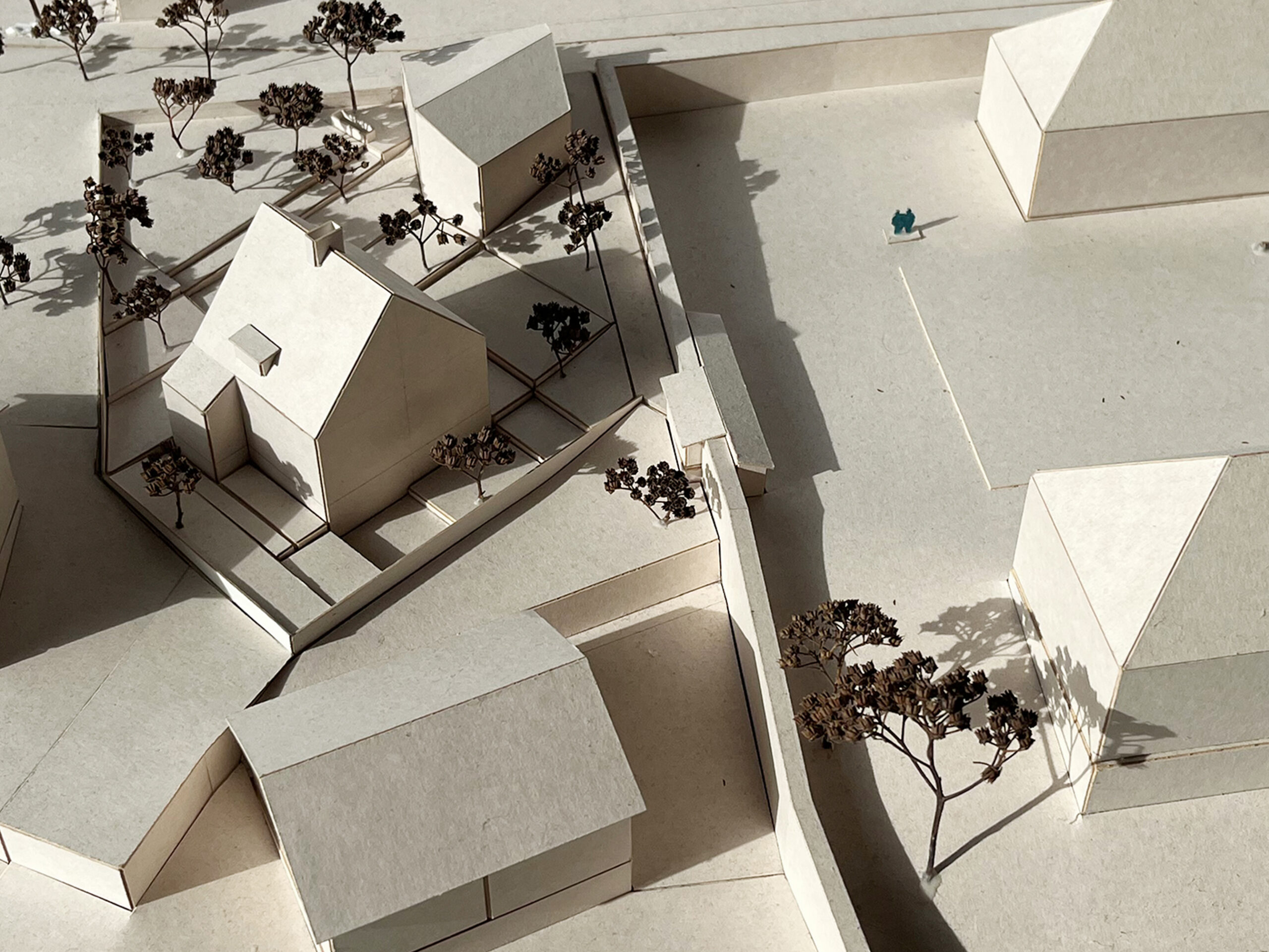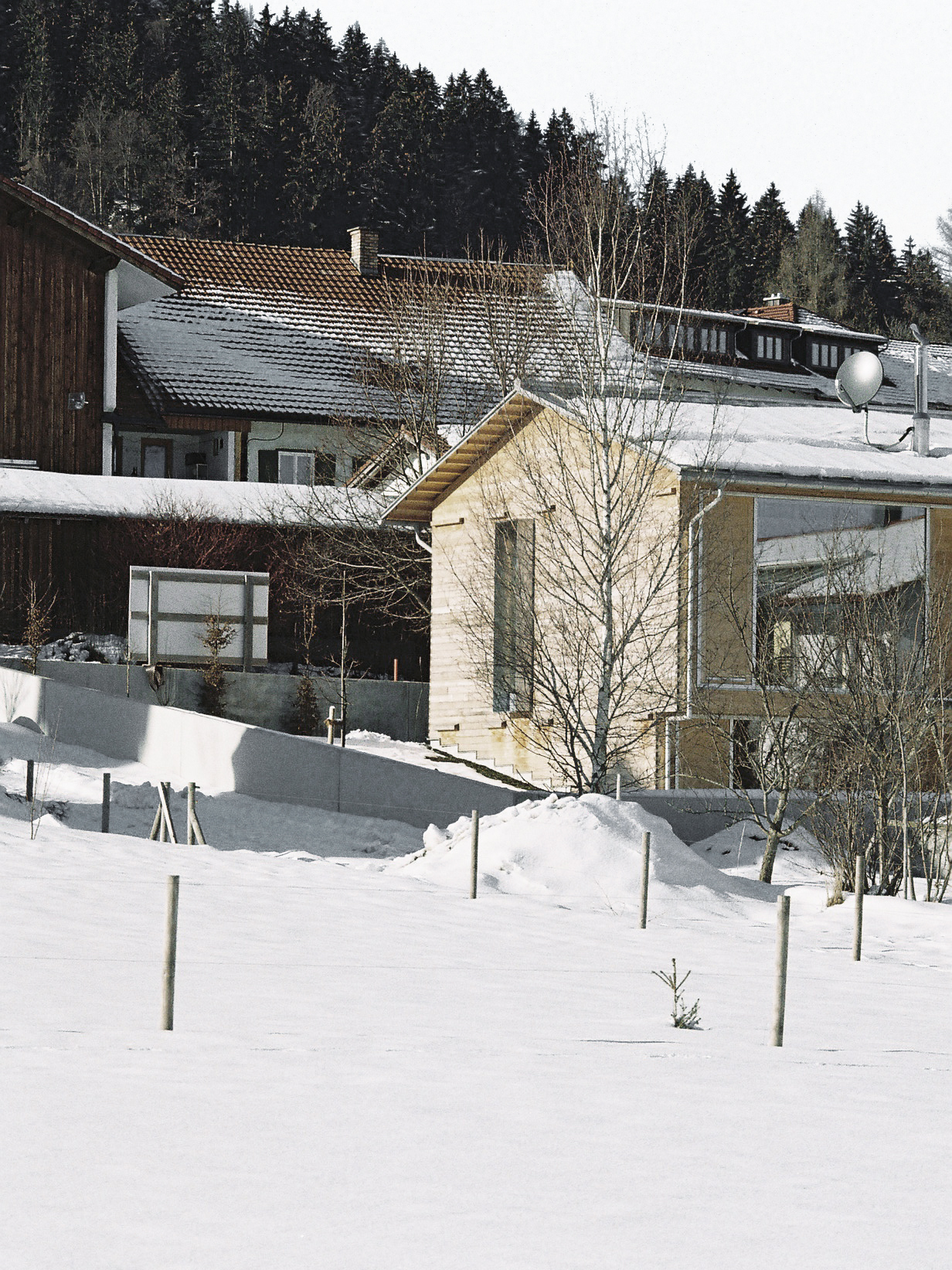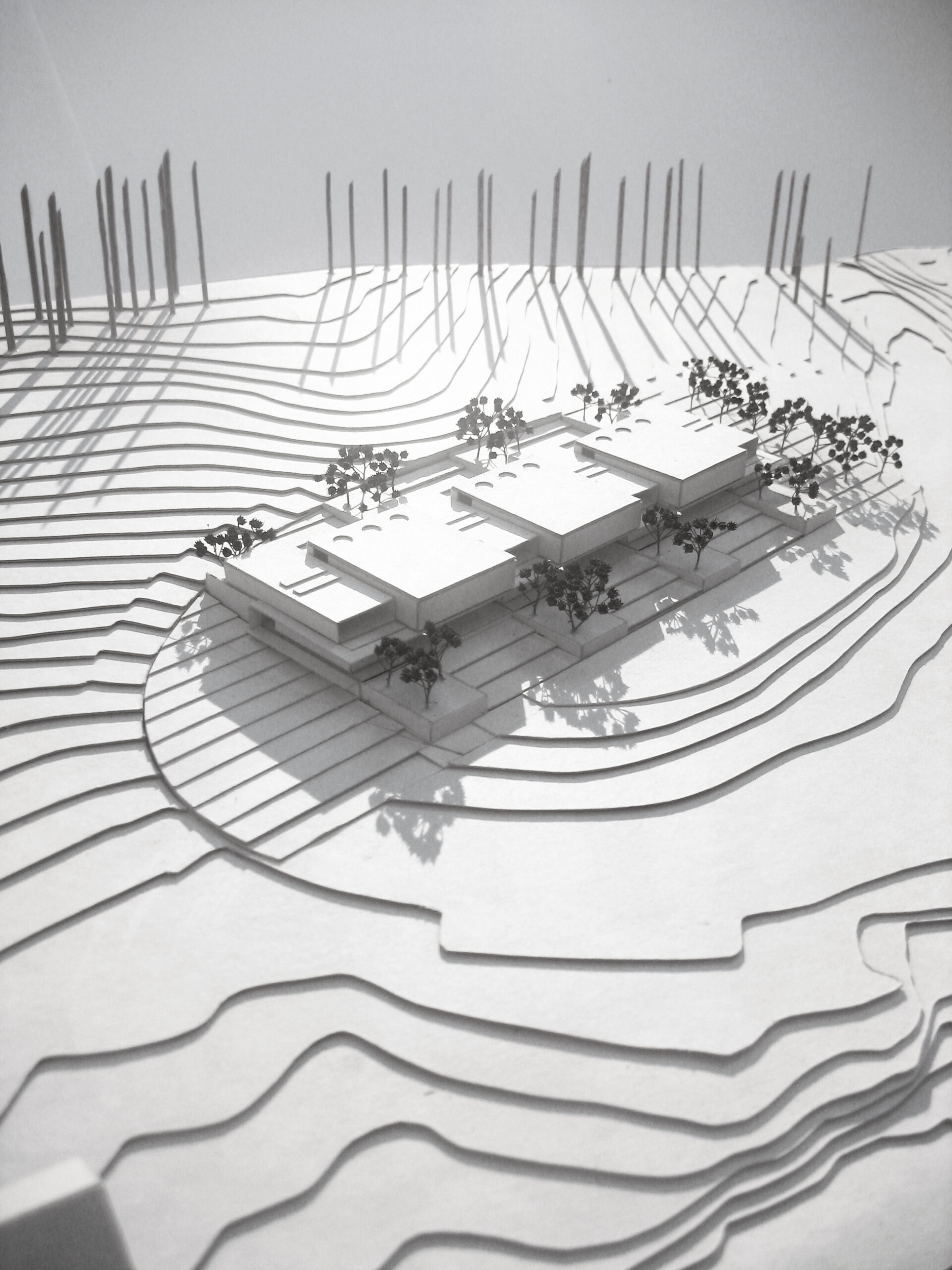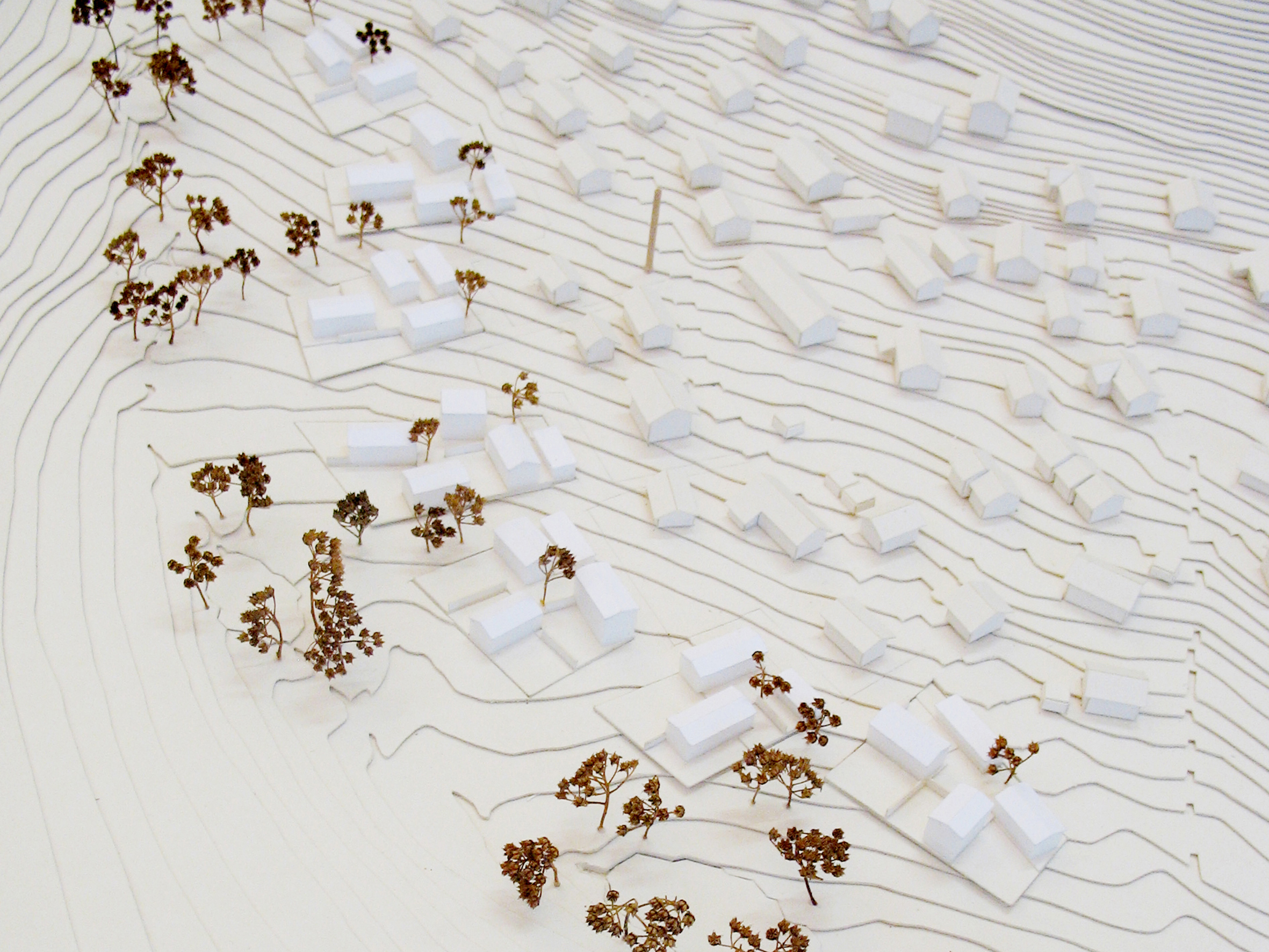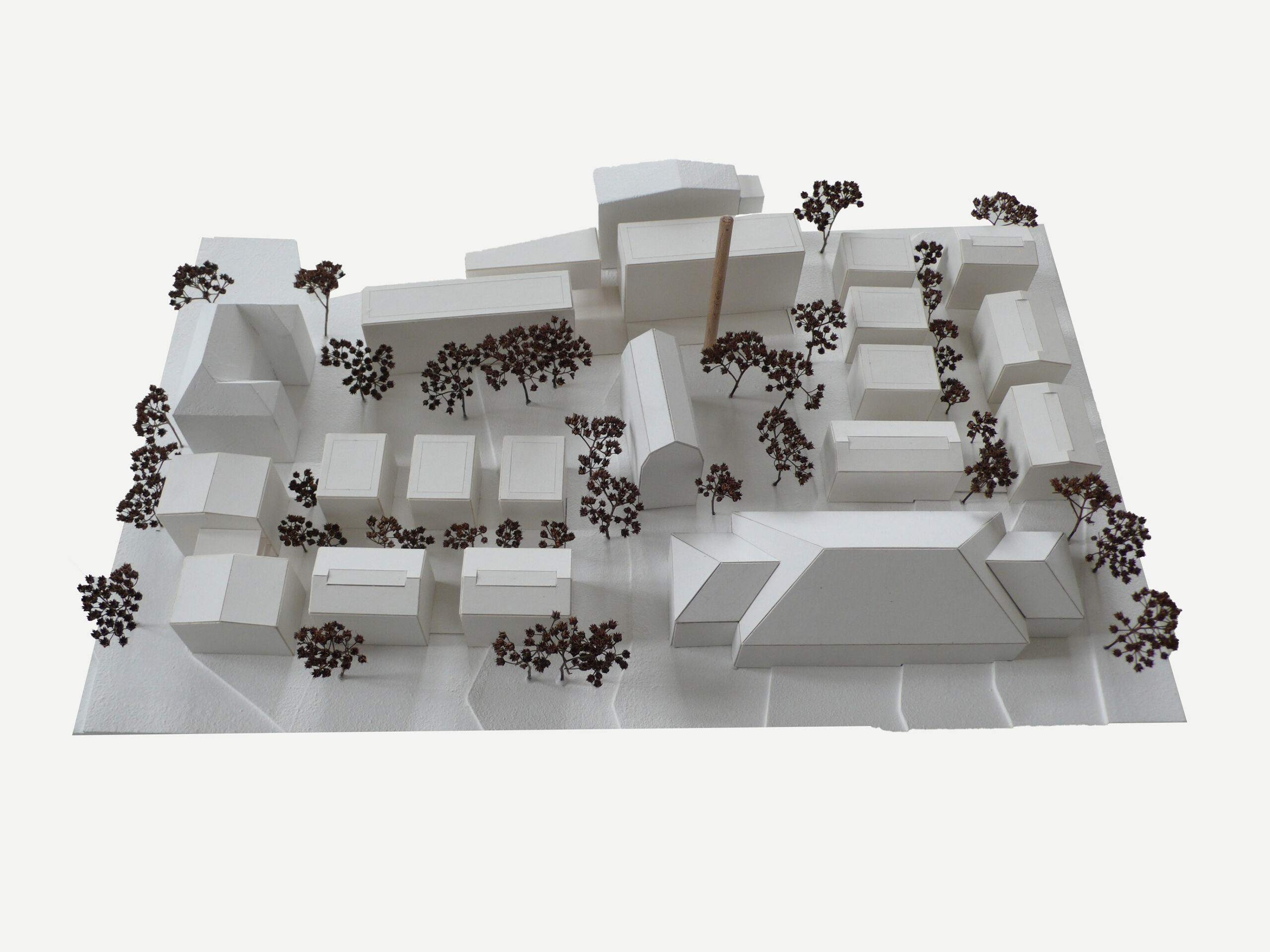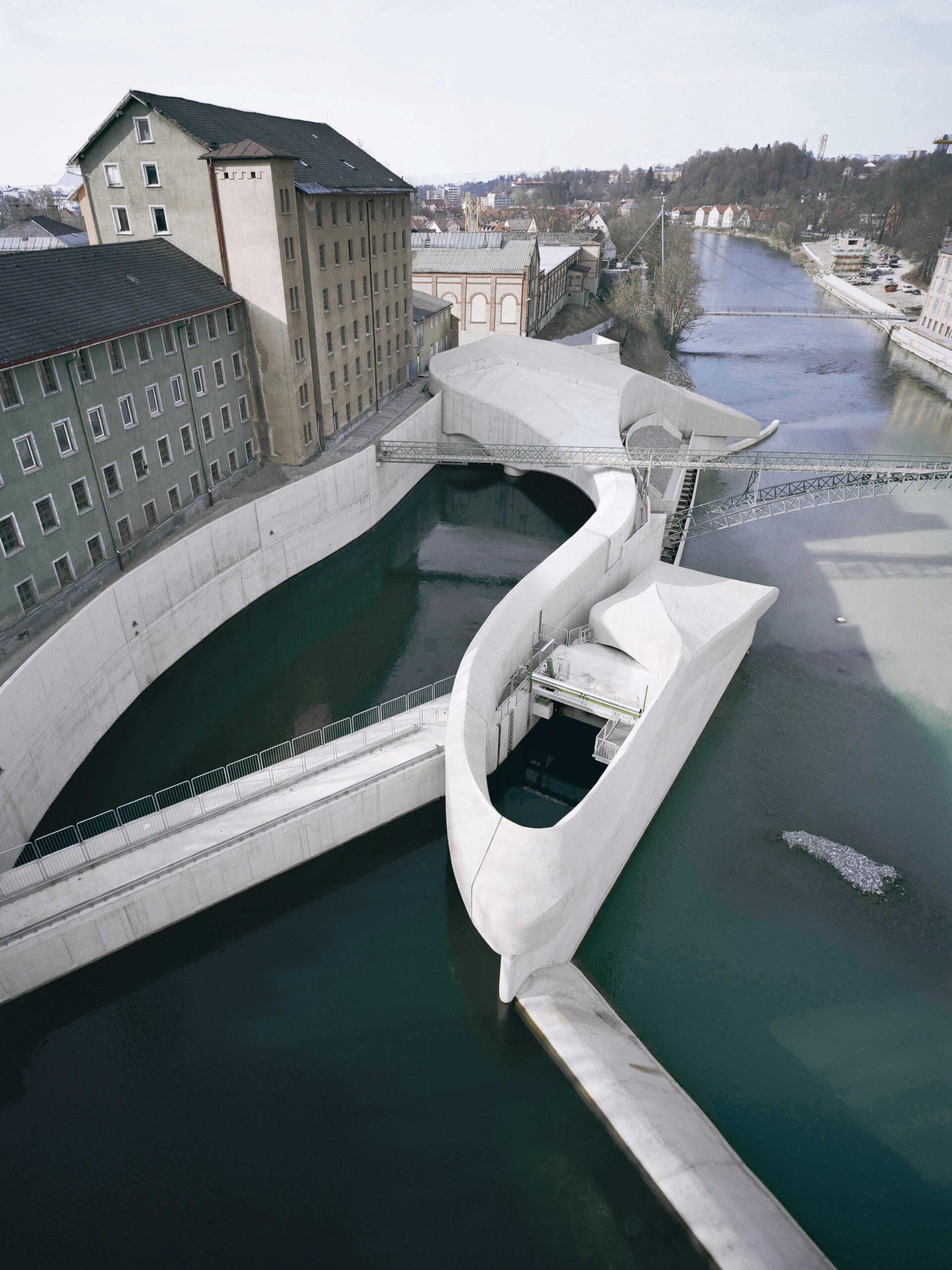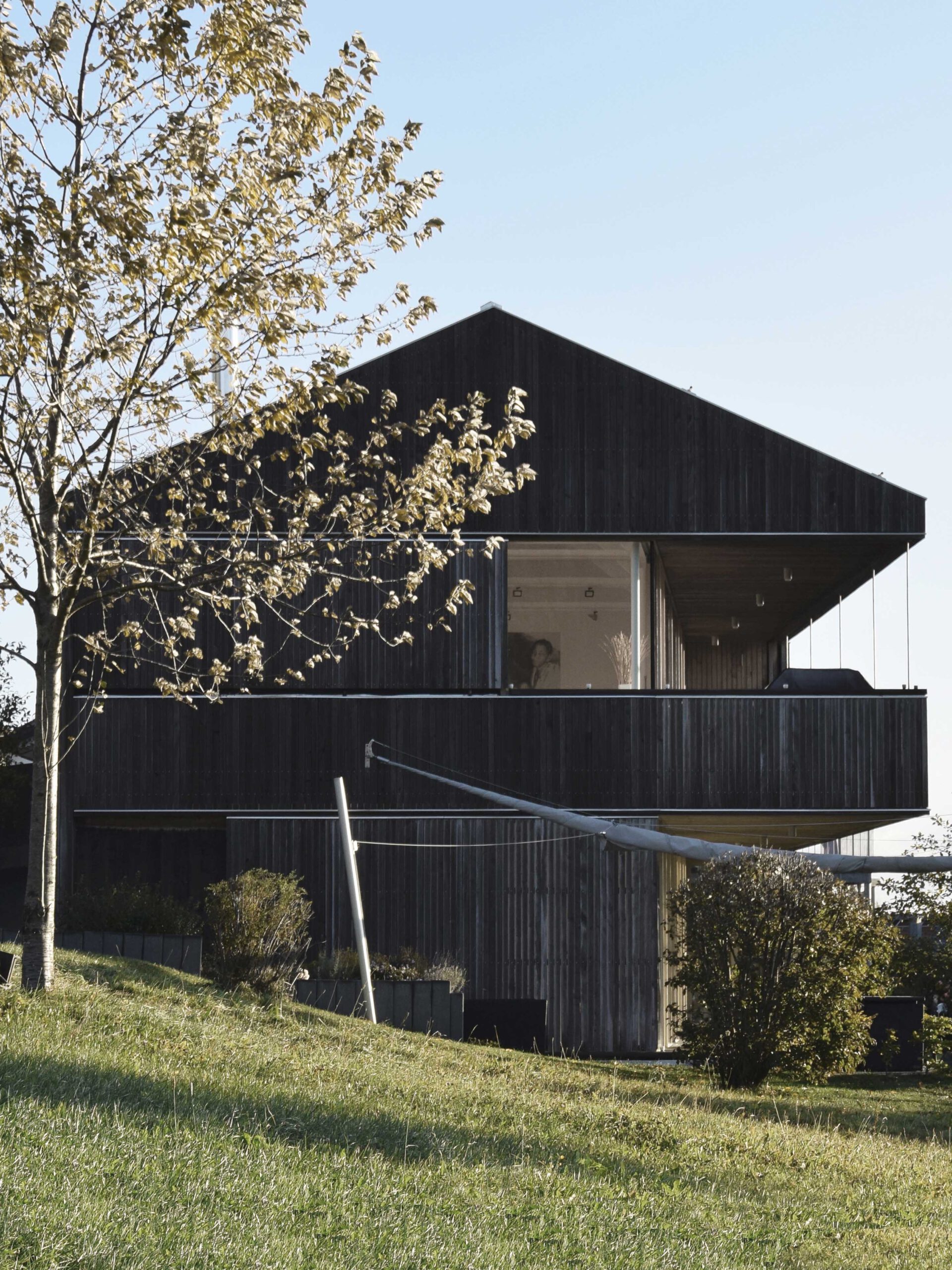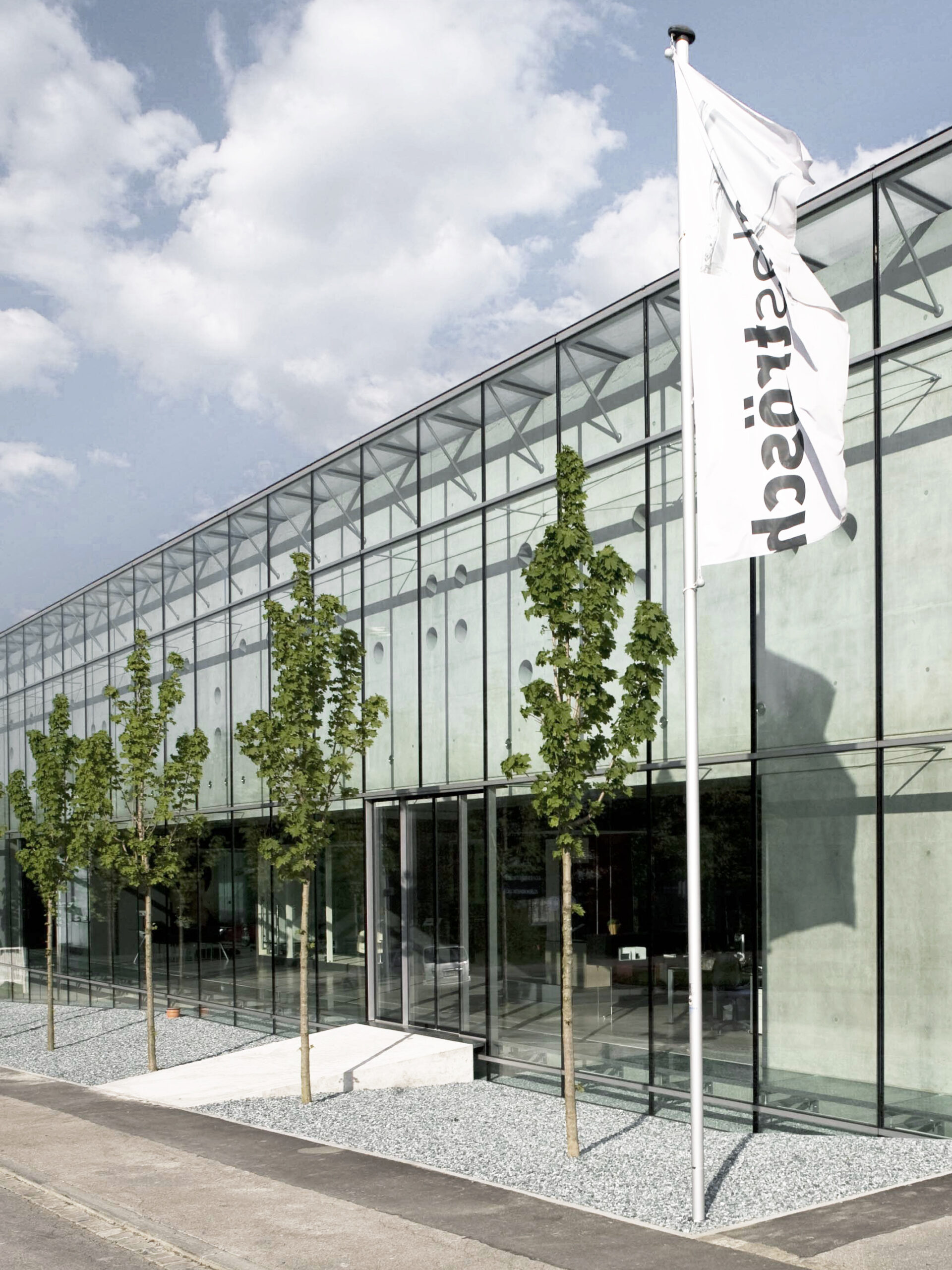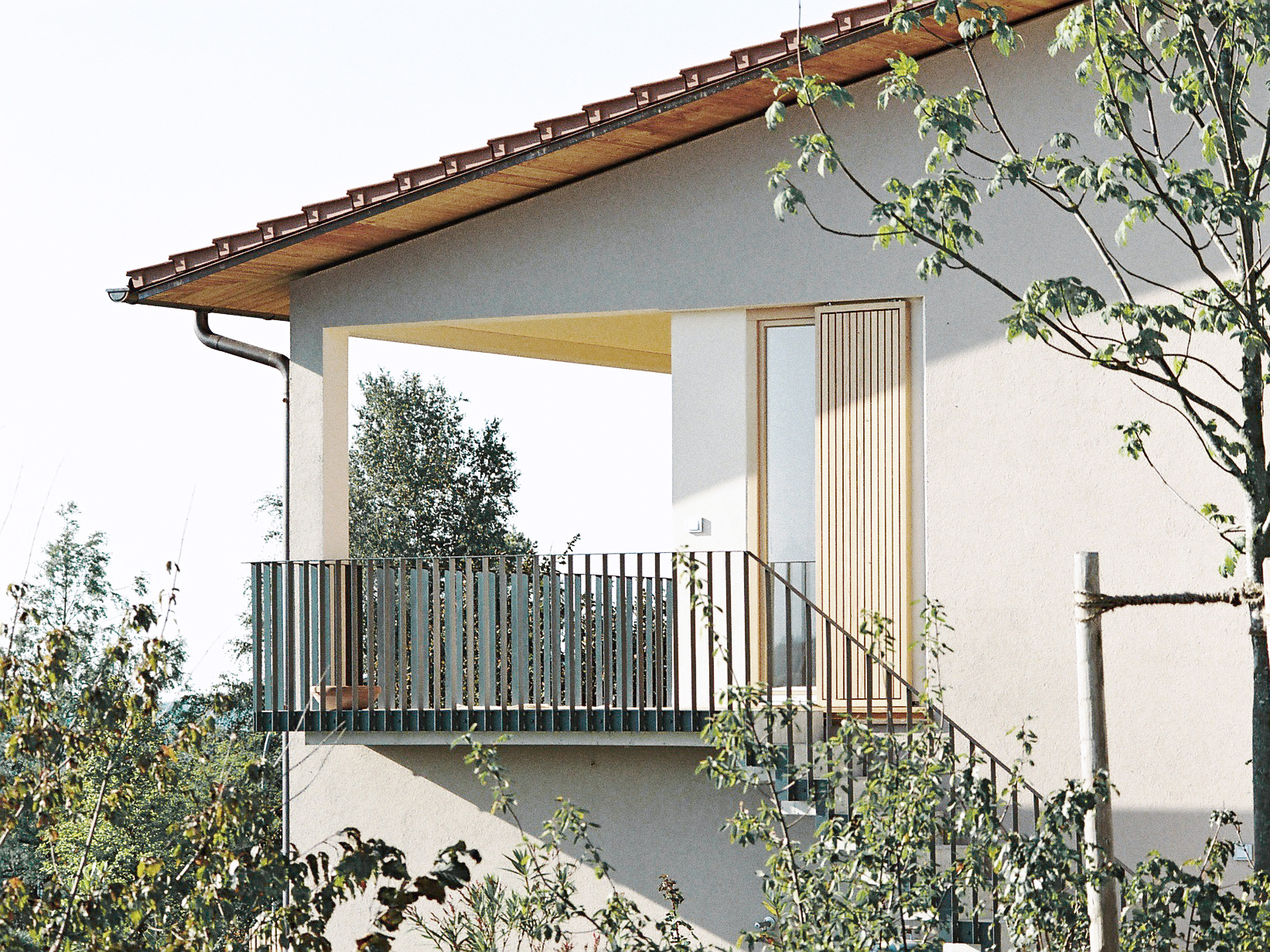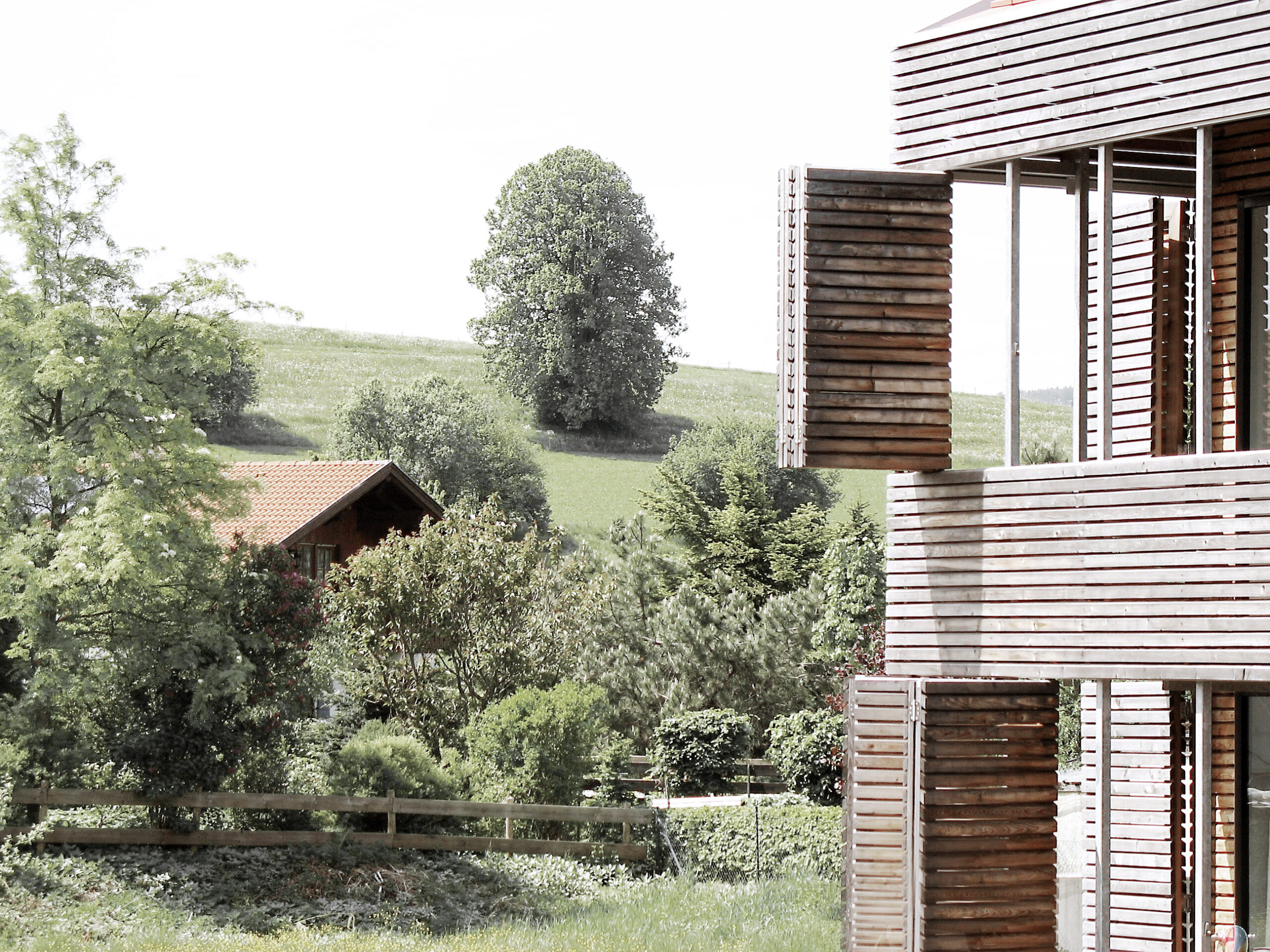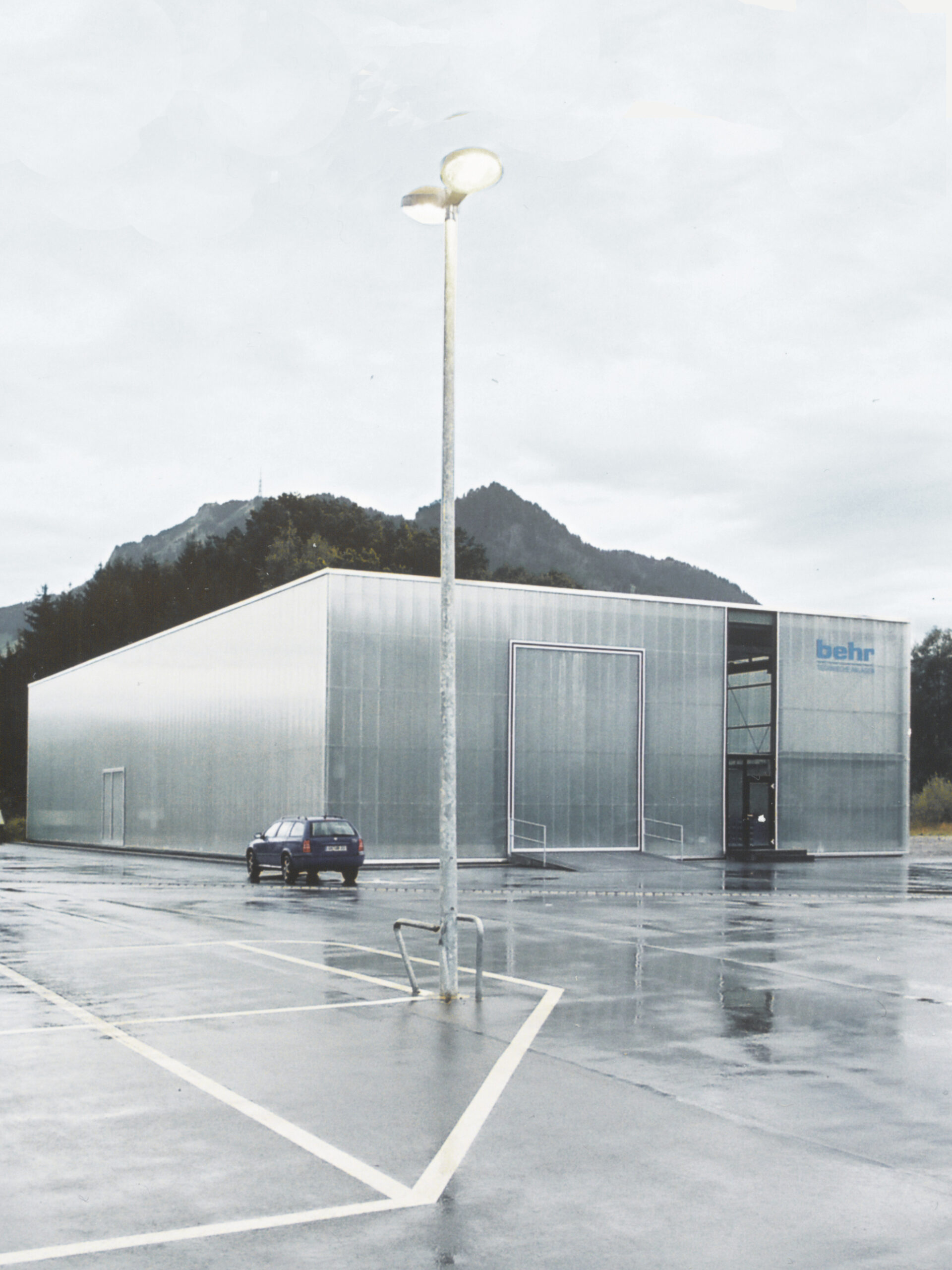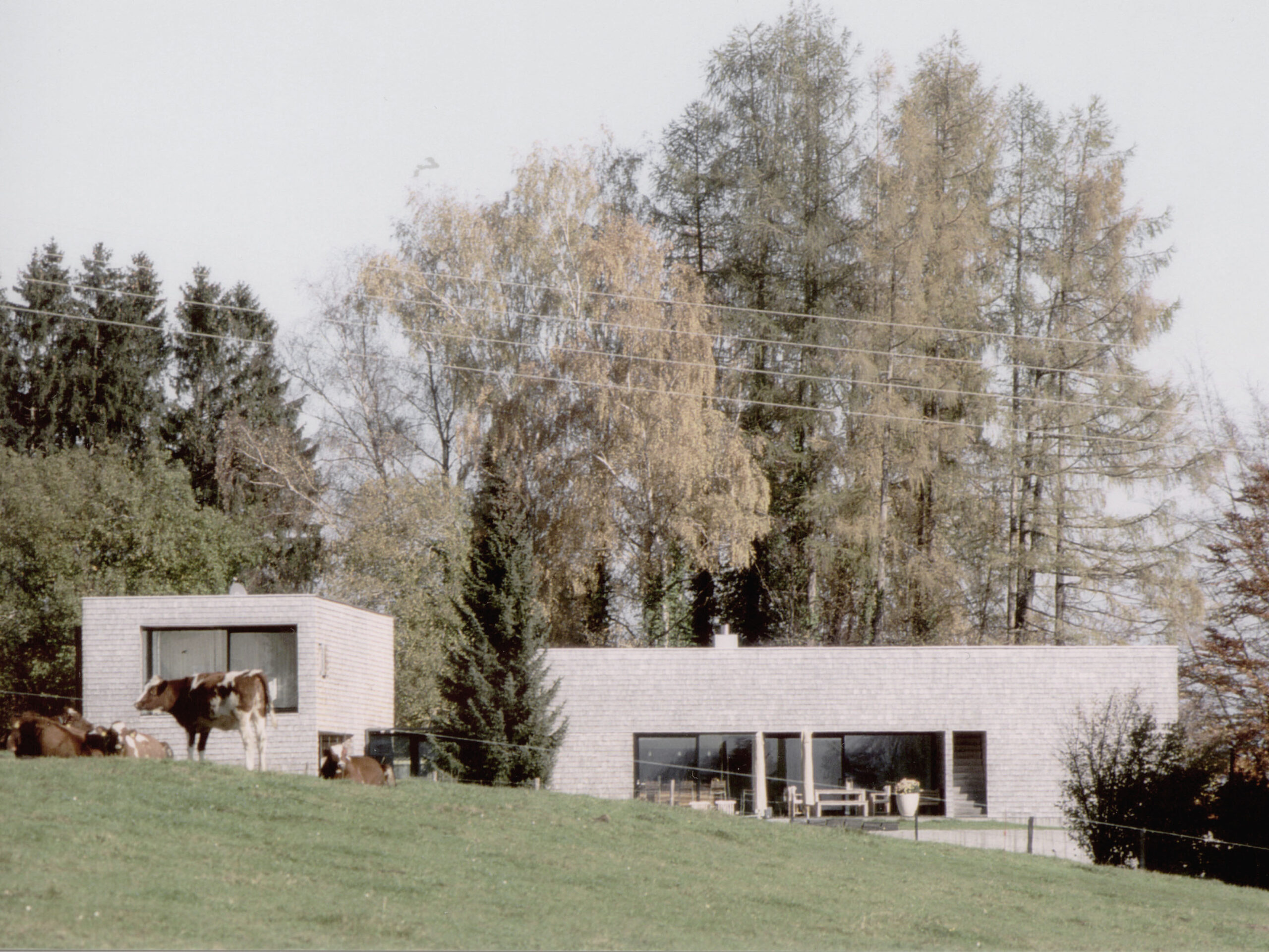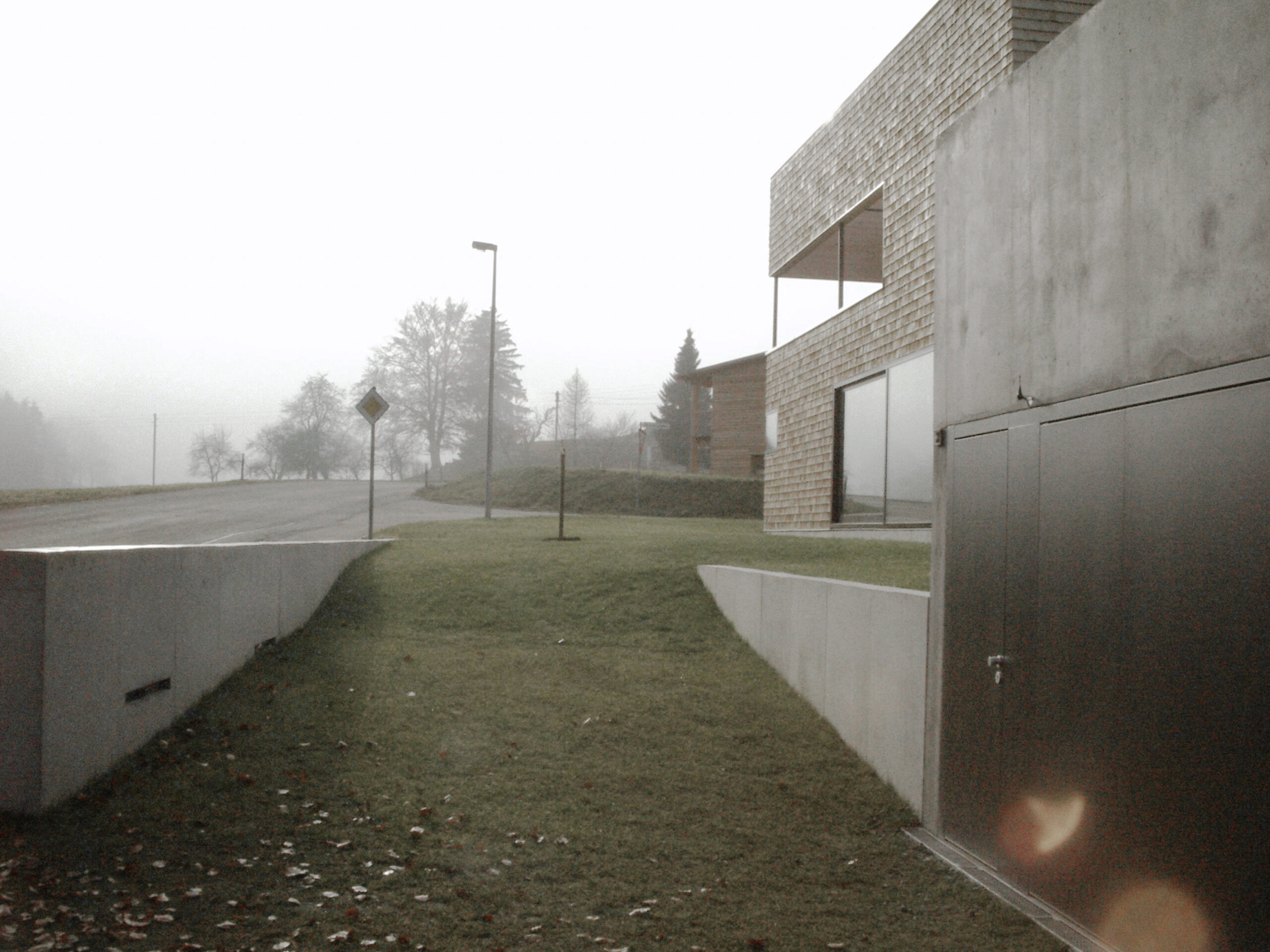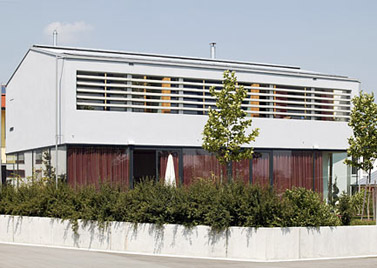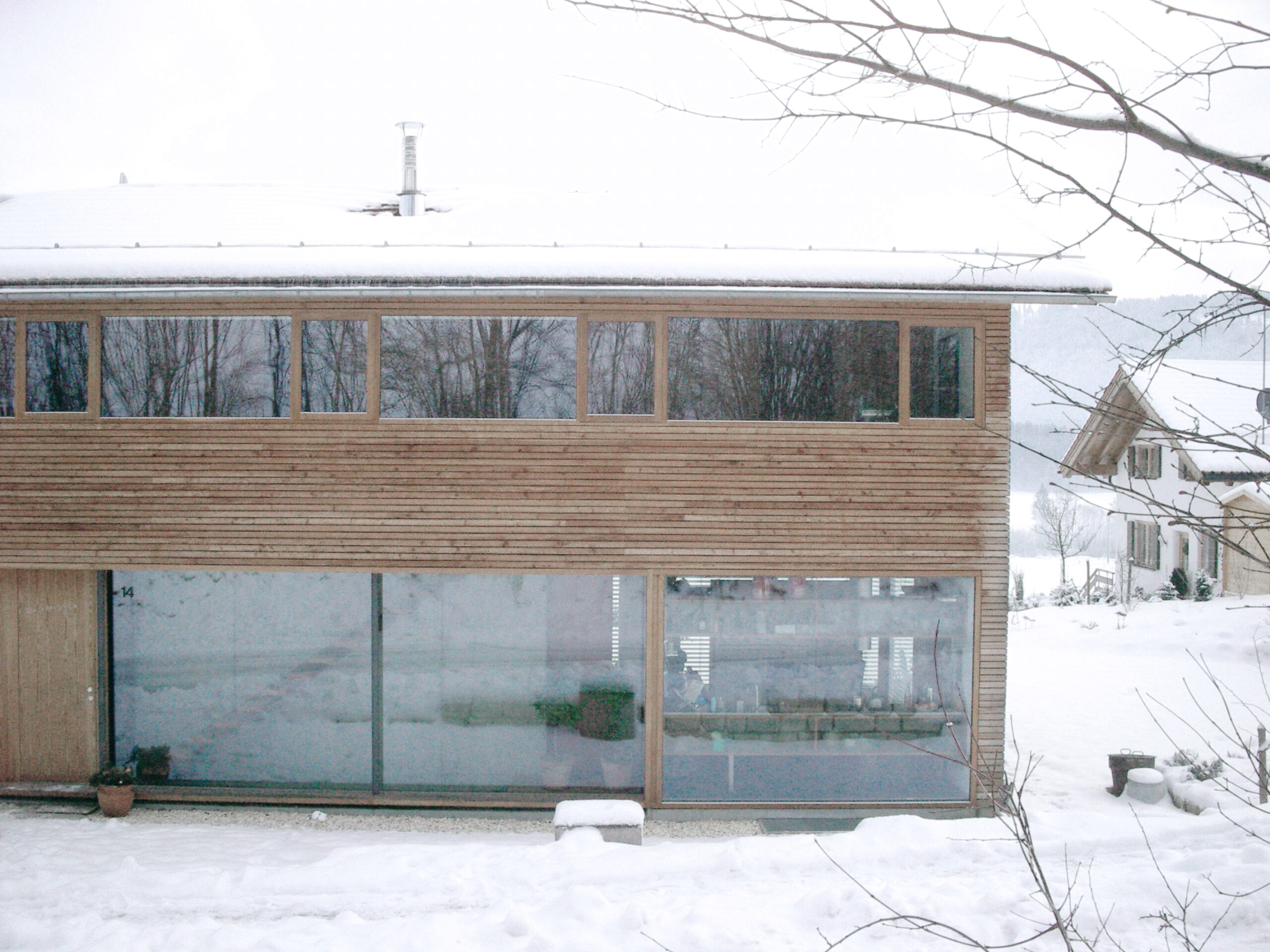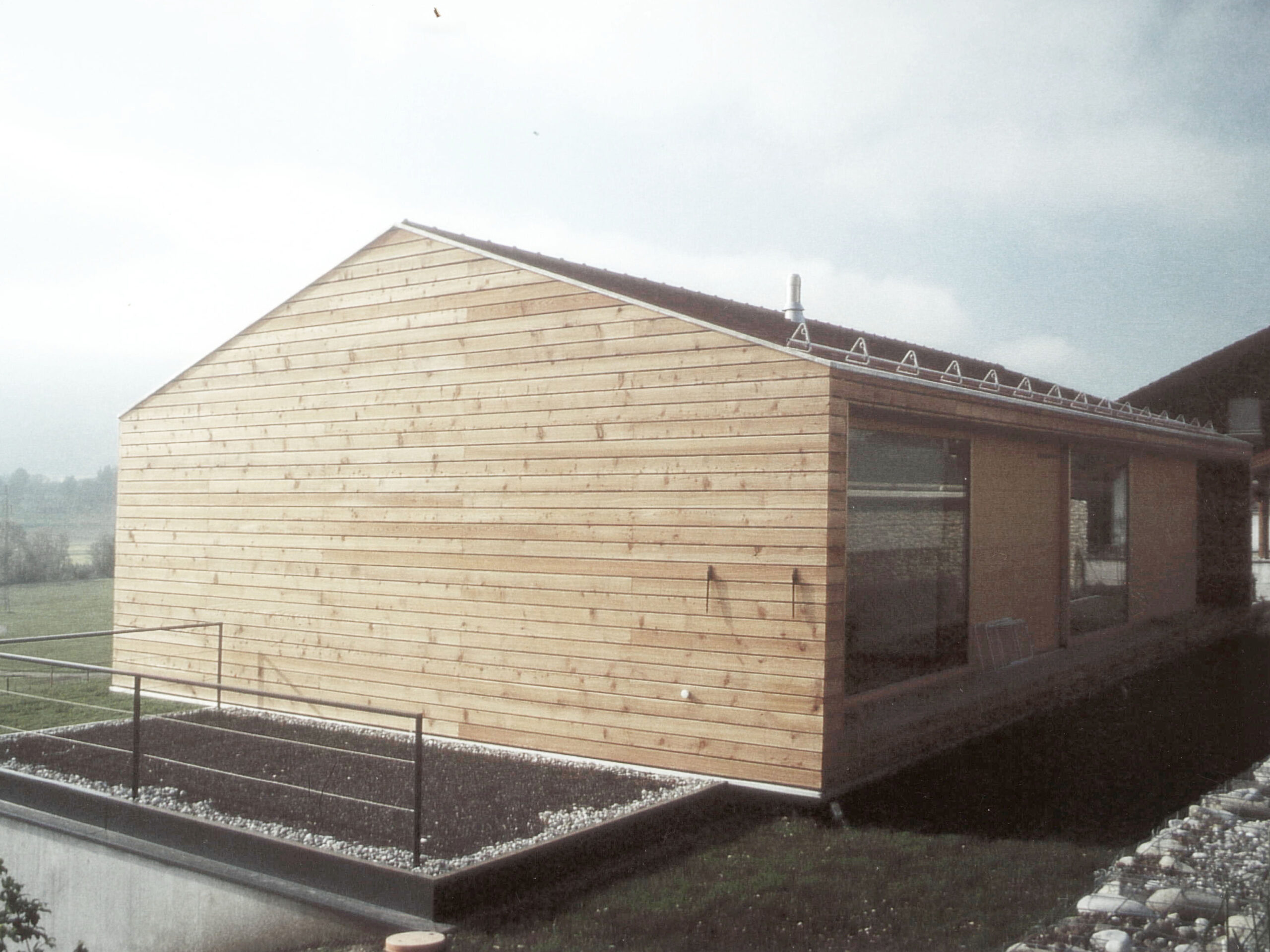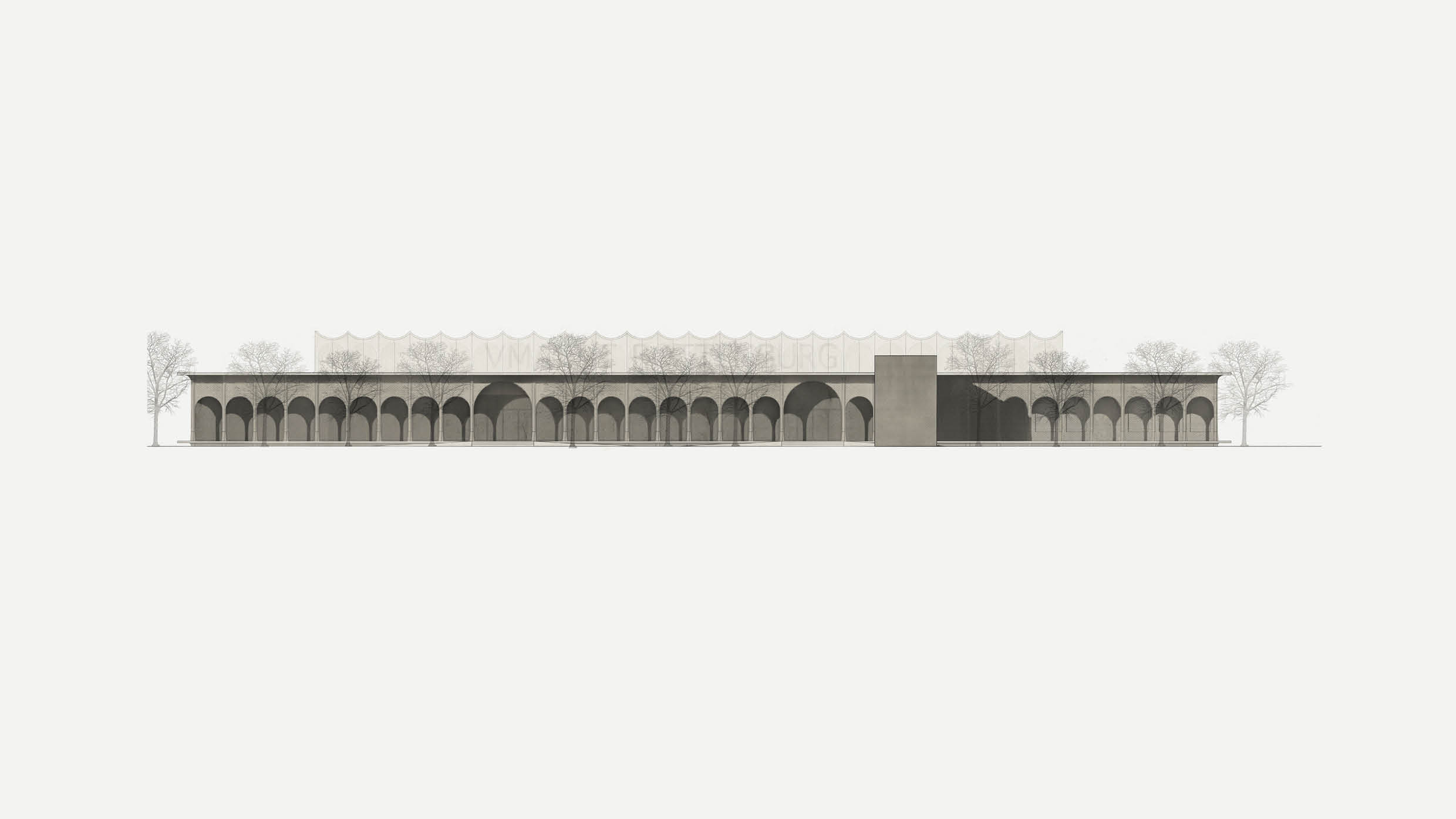
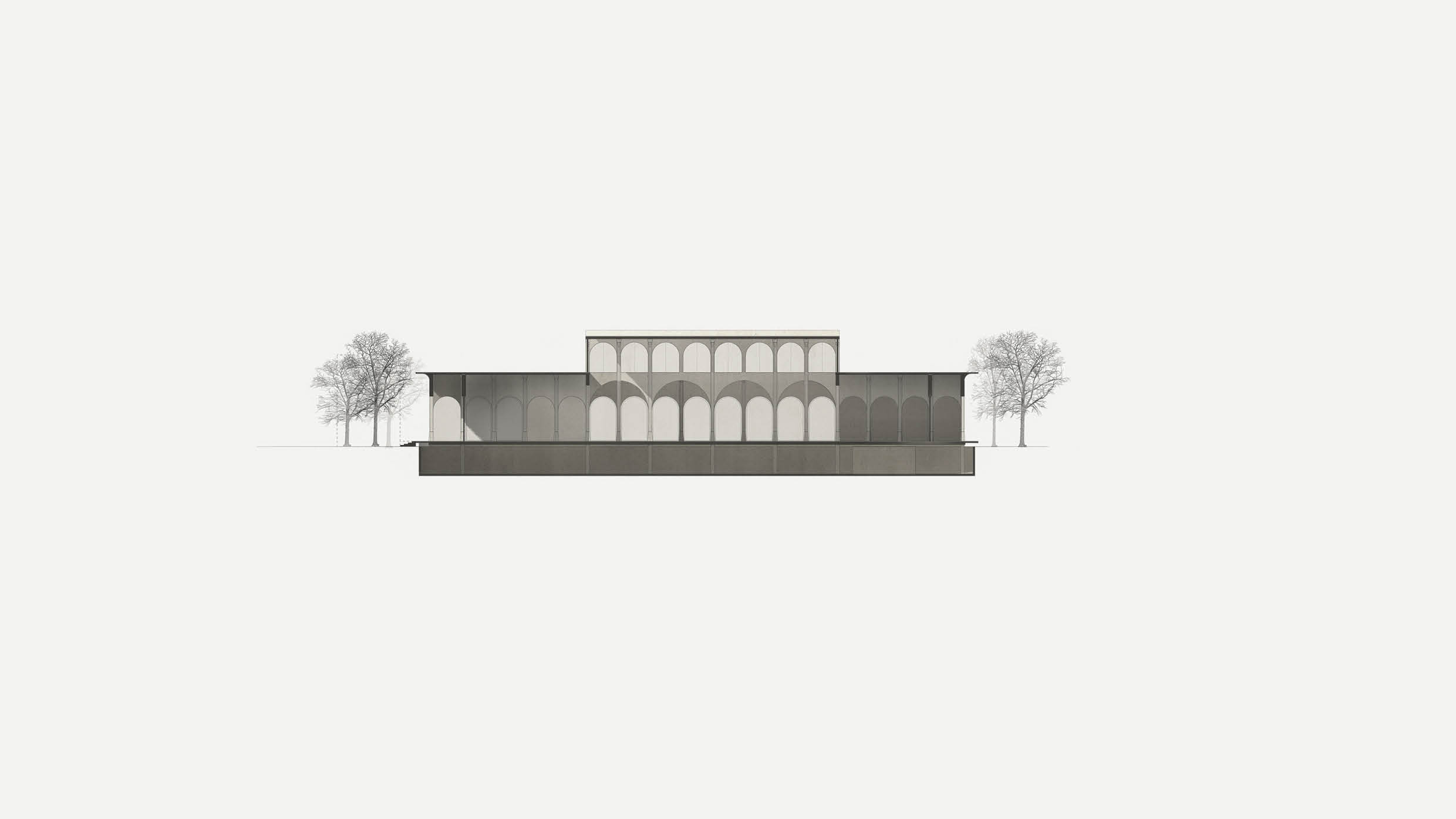
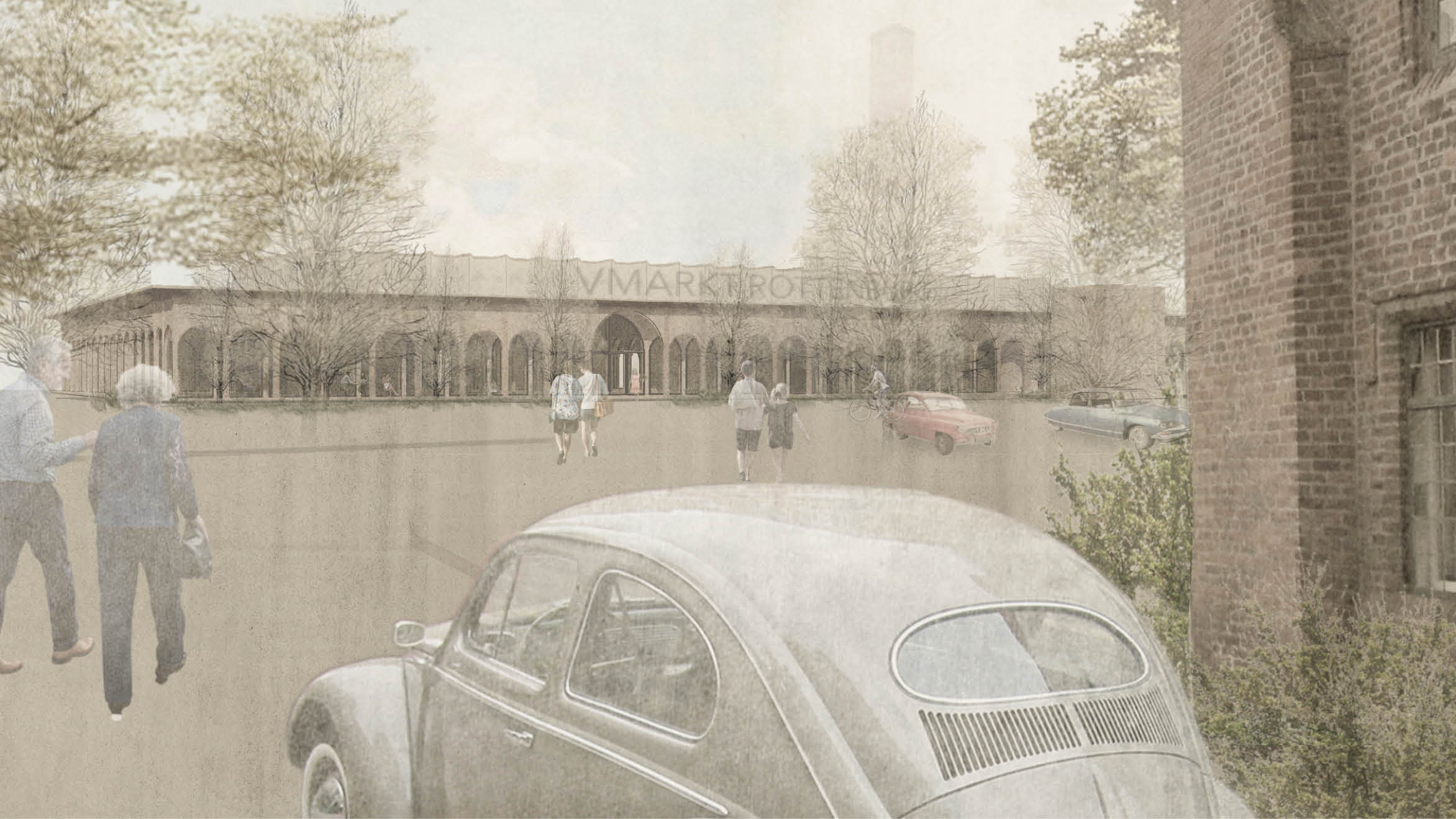
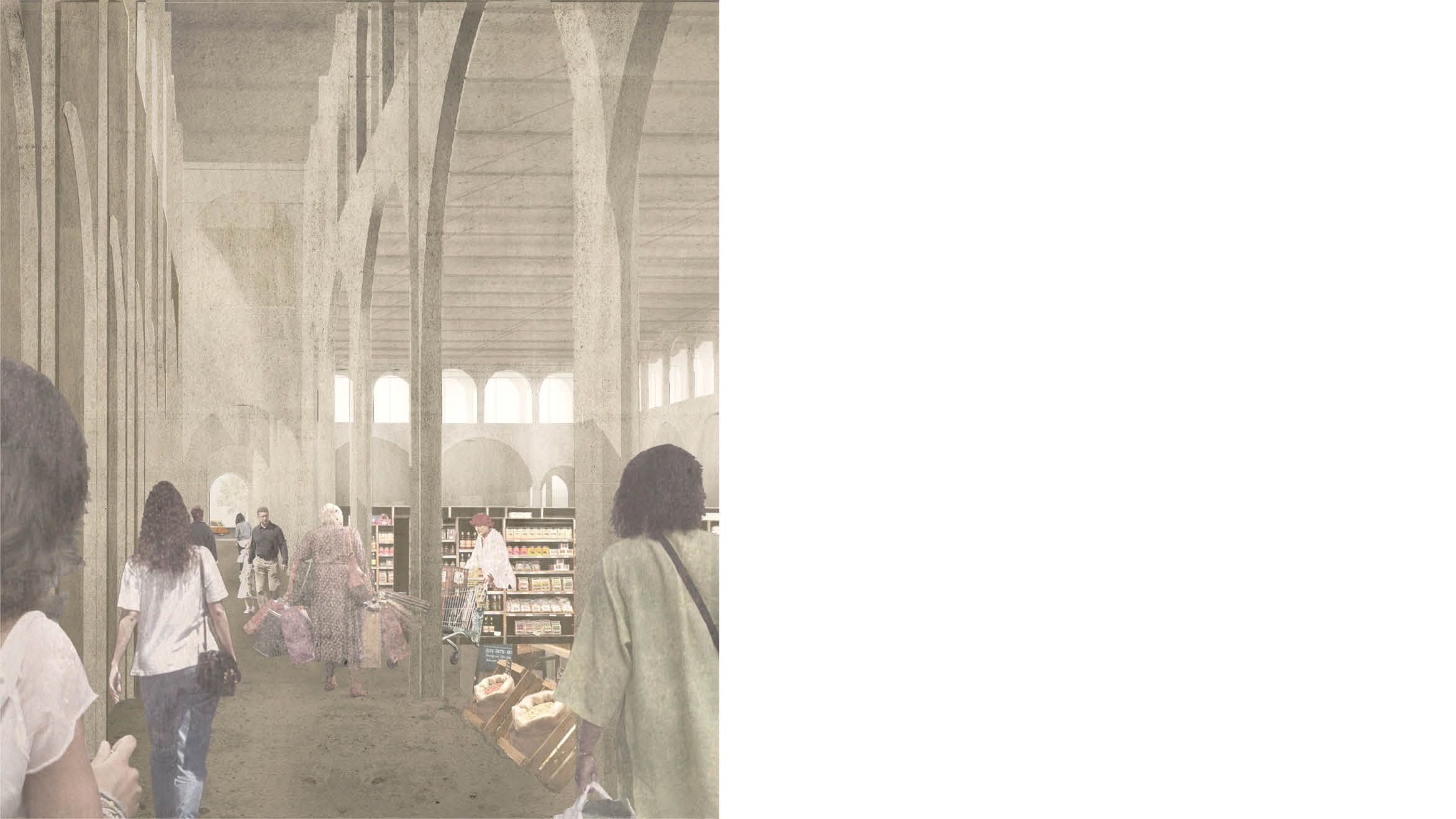
MARKET HALLE ROTTENBERG
A new elevated water tank is to be built on the Schellenberg in Donauwörth, in the immediate vicinity of the “Sternschanze” ground monument. The concept envisages the erection of a tower-like structure, whereby this form of construction allows the required landmark effect to be achieved. The structure plays with the historical features of the location. Historically, hills served as strategically important locations. As a result, fortifications with towers were built there as vertical structures that were visible from afar. The Schellenberg was also characterized by a fortification, the historically significant remains of which can be seen today as the “Sternschanze”. In connection with this, the learned image of historic water towers serves as a further reference. Due to the necessary height of the water tanks, these have a strong verticality and become an element that characterizes the city or landscape, staging the supply of the population.
The water tower in Donauwörth is being consistently developed as a building for the public. It not only serves as a reservoir, but is also made accessible to the public in the form of a viewing platform. In addition, the water technology is showcased through the glazed first floor. On the one hand, this provides the opportunity to bring the relevance of the topic of “water supply” closer to the population, and on the other hand, it provides a fundamental impulse to enhance the “Sternschanze” ground monument by offering an overview of the entire area. Not only can the Sternschanze be reconstructed in its holistic form, but a panoramic view of the historic old town of Donauwörth and the Danube valley can also be generated.
The new water tower is located to the south of the site of the new residential development “Alfred Delp Quartier” and to the north of the Sternschatze monument, a park-like structure. The water tower is not defined as a space-defining, square-bounding element, but as part of the green area characterized by old trees. This positioning ensures that the parking space has an impact on the newly created square.
At the same time, the removal of the infrastructural structure will strengthen the residential buildings that form the square and the Alfred Delp Pavilion as a central urban element. Additional pathways through the park will be created and linked to the new network of paths defined in the urban development framework plan.
Due to its self-image as part of the park space, the design of the water tower refers to the structure of a tree. An elevated core of monolithic, board-formed insulating concrete forms the basic structure, to which an interlocking flat steel mesh is attached. This also serves as a support for the steel stringer stairs and for the roof of the viewing terrace. The concrete structure creates an analogy to the density of the foliage. In addition, the building's own red tonality plays with the seasonally changing colors of the surrounding trees. The ground-floor elevation with glazing provides a view of the water technology on the one hand, while on the other it creates a relationship to the appearance of a group of trees with its permeability below the base of the branches. The flat steel mesh with its numerous branching points, on the other hand, abstractly translates the image of branch structures.
The floor plan concept follows the radial structure of a sliced tree trunk. The stainless steel water tank with a capacity of 1700m3 forms the core. Inspection walkways are arranged around the tank and can be reached via a ladder system. Below the tank, at first floor level, is the control room, the necessary airlock, the inspection gates and the emergency power generator. In the basement, visible from the control room via an air space, is the pump cellar with WC. Surrounding the concrete core is a staircase system on the outside, which serves as a stairway to the covered viewing platform. Rainwater collects there in a depression in the ground, which only evaporates slowly and once again highlights the theme of water.
TOPIC:
Consumer market in an old brickworks area
LOCATION:
Rottenburg a.d Laaber, DE
YEAR:
2018
CLIENT:
Eisele Architekten, Kempten
TYPOLOGY:
Commercial | Infrastructure
STATUS:
Authorisation Phase
TEAM:
Michael Becker, Roland Schafroth, Anna Glajc
PARTNERS:
Eisele Architekten, Kempten
VISUALISATION:
Becker Architects Planners
WORKS
No.155 | 2023.
School for Timber and Design Garmisch-Partenkirchen

No.132 | 2016
Development Plan Mindelheim Tractor Museum
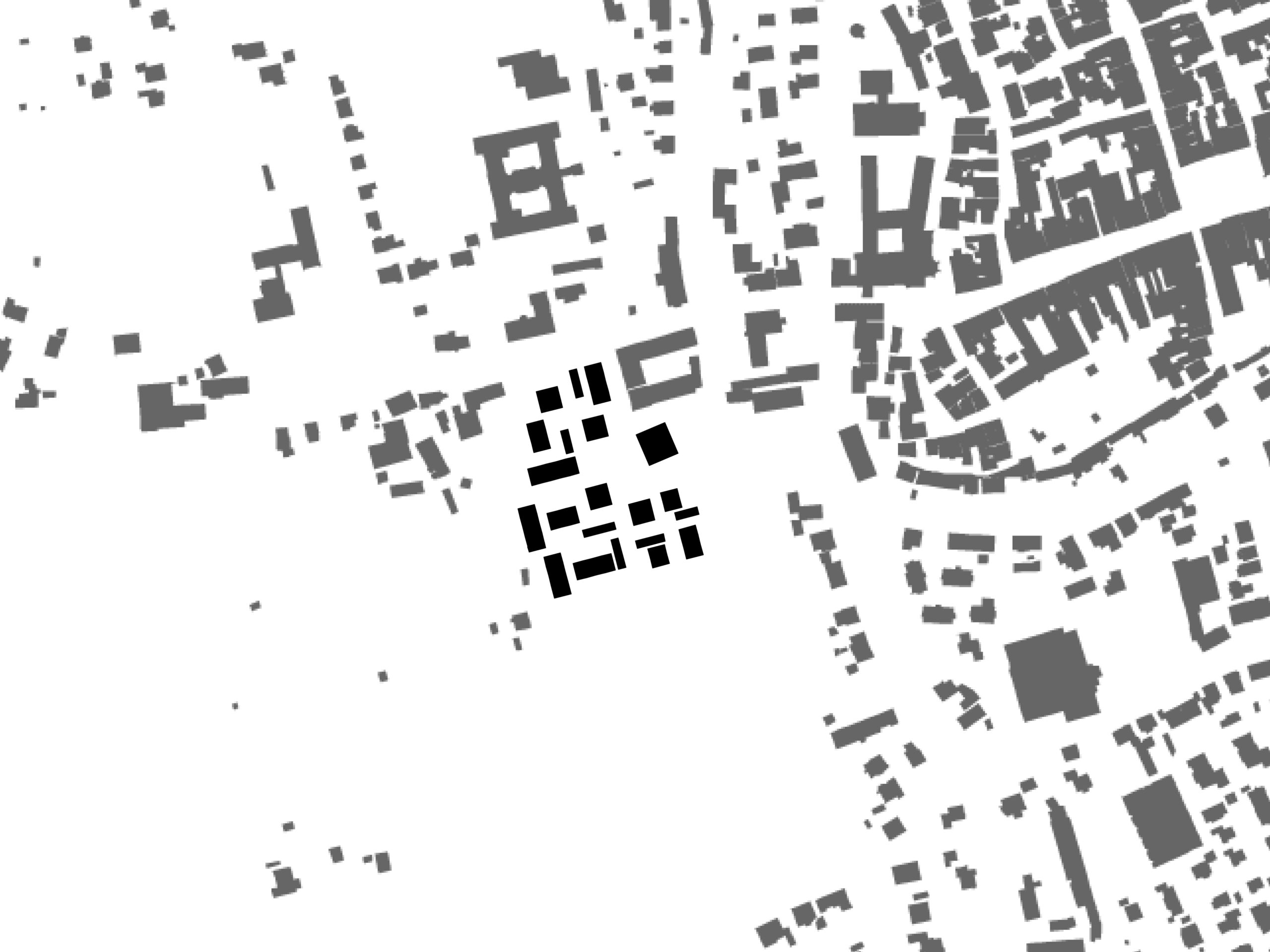
No.119 | 2014
Development Plan of Hospital Kempten

No.111 | 2013.
Transformation Of The Haindl Paper Factory Site Waltenhofen
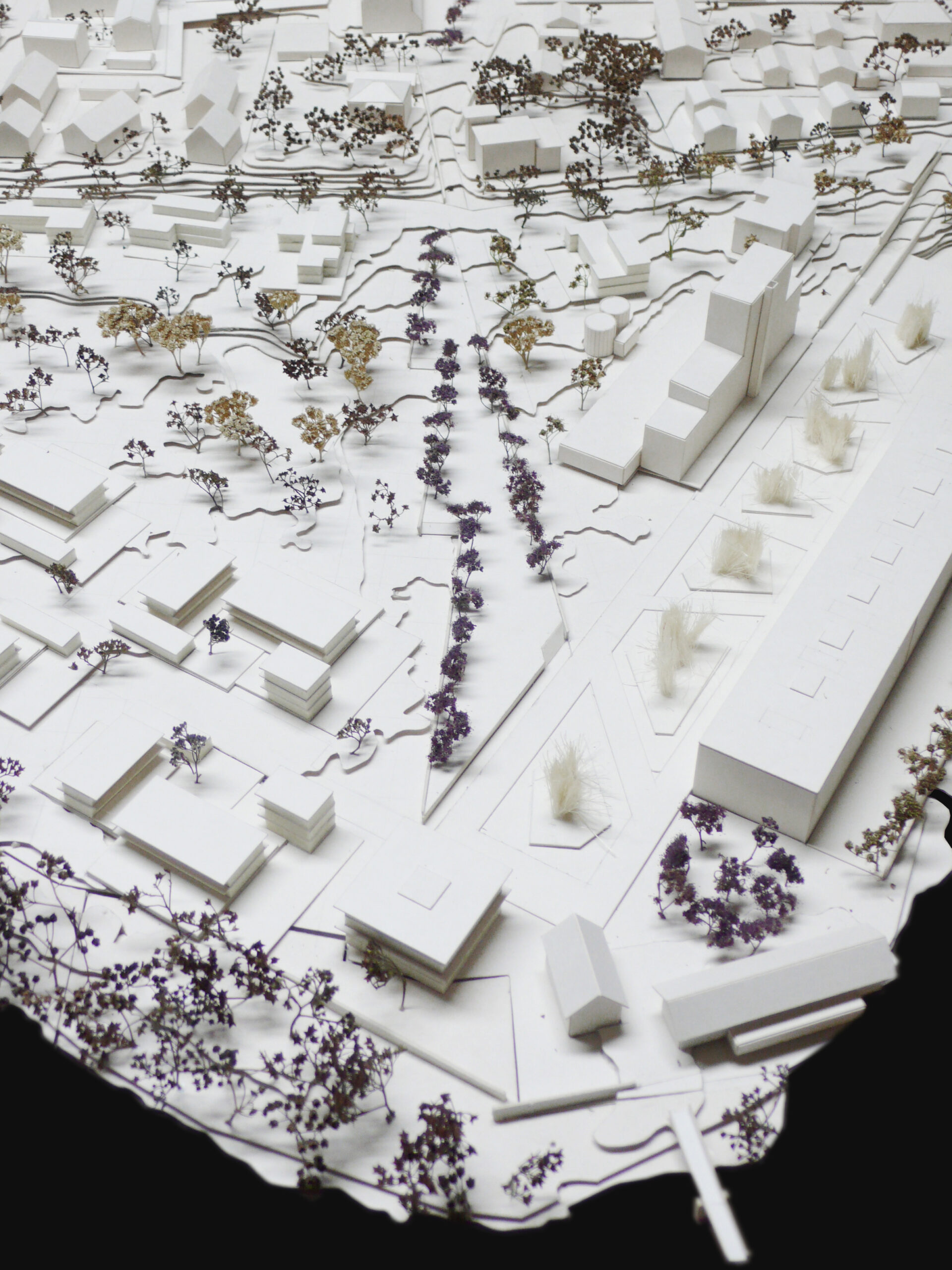
No.102 | 2012
IFEN Walmendinger Horn Cable Car Station

CONTACT
STUDIO KEMPTEN
Keselstraße 14
87435 Kempten. Allgäu
P.: +49.831.745 8998.0
F.: +49.831.745 8998.9
General: kontakt@becker-architekten.net
Career | Press: info@beckerarchitects.eu
SOCIAL MEDIA
LEGAL
BECKER ARCHITECTS PLANNERS BDA ©2024

